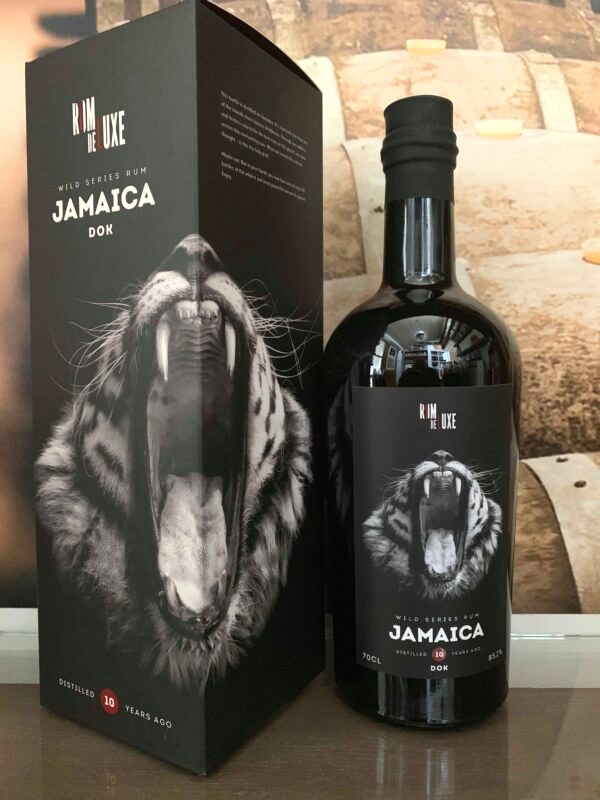
Photo (c) Romdeluxe
Romdeluxe in Denmark is at this point (2019) more a commercial rum club that makes private label bottlings and runs promotions around the country, than a true independent bottler — but since they do several releases, I’ll call them an indie and move right on from there. Earlier, in May 2019, they lit up FB by releasing this limited-edition high-ester funk-bomb, the first in their “Wild Series” of rums, with a suitably feral tiger on the label. I can’t tell whether it’s yawning or snarling, but it sure looks like it can do you some damage without busting a sweat either way.
This is not surprising. Not only is this Jamaican bottled at one of the highest ABVs ever recorded for a commercially issued rum – growling in at 85.2%, thereby beating out the Sunset Very Strong and SMWS Long Pond 9 YO but missing the brass ring held by the Marienburg – but it goes almost to the screaming edge of Esterland, clocking in, according to the label, at between 1500-1600 g/hlpa (the legal maximum is 1600)….hence the DOK moniker. Moreover, the rum is officially ten years old but has not actually been aged that long – it rested in steel tanks for those ten years, and a bit of edge was sanded away by finishing it for three months in small 40-liter ex-Madeira casks. So it’s a young fella, barely out of rum nappies, unrefined, uncouth and possibly badass enough to make you lose a week or two of your life if you’re not careful.
Knowing that, to say I was both doubtful and cautious going in would be an understatement, because the rum had a profile so ginormous that cracking the cap on my sample nearly lifted the roof of of the ten-storey hotel where I was tasting it (and I was on the second floor). The nose was, quite simply, Brobdingnagian, a fact I relate with equal parts respect and fear.
The crazy thing was how immediately sweet it was – a huge dose of fleshy fruits bordering on going bad for good, creme brulee, sugar water, honey, raisins and a salted caramel ice cream were the first flavours screaming out the gate (was this seriously just three months in Madeira?). It was huge and sharp and very very strong, and was just getting started, because after sitting it down (by the open window) for half an hour, it came back with vegetable soup, mature cheddar, brine, black olives, crisp celery, followed by the solid billowing aroma of the door being opened into a musty old library with uncared-for books strewn about and mouldering away. I say it was strong, but the nose really struck me as being more akin to a well-honed stainless-steel chef’s knife — clear and glittering and sharp and thin, and very very precise.
The clear and fruity sweet was also quite noticeable when tasted, combining badly with much more mucky, mouldy, dunder-like notes: think of a person with overnight dragon’s breath blowing Wrigley’s Spearmint gum into your face on a hot day. It was oily, sweaty, earthy, loamy and near-rank, but damnit, those fruits pushed through somehow, and combined with vanilla and winey tastes, breakfast spices, caramel, some burnt sugar, prunes, green bananas and some very tart yellow mangoes, all of which culminated in a very long, very intense finish that was again, extremely fruity – ripe cherries, peaches, apricots, prunes, together with thyme, mint lemonade, and chocolate oranges.
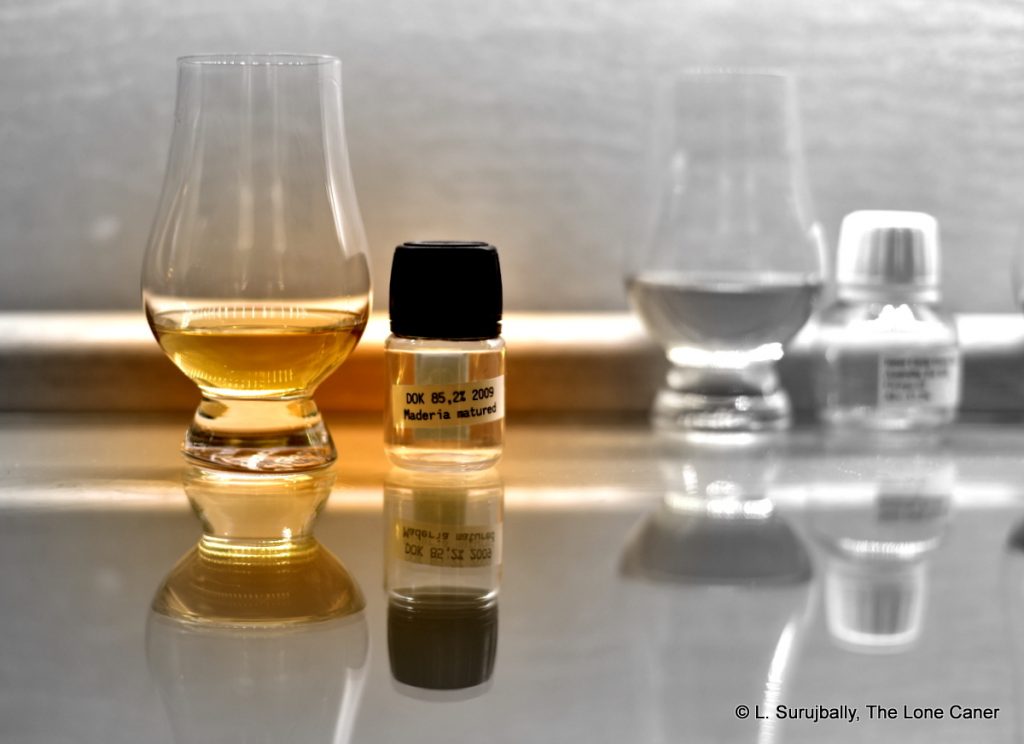
Whew! This was a hell of a rum and we sure got a lot, but did it all work? And also, the question a rum like this raises is this: does the near titanic strength, the massive ester count, the aged/unaged nature of it and the final concentrated finish, give us a rum that is worth the price tag?
Me, I’d say a qualified “Yes.” On the good side, the Wild Tiger thing stops just short of epic. It’s huge, displaying a near halitotic intensity, has a real variety of tastes on display, with the sulphur notes that marred the TECA or some other DOKs I’ve tried, being held back. On the other hand, there’s a lack of balance. The tastes and smells jostle and elbow each other around, madly, loudly, without coordination or logic, like screeching online responses to a Foursquare diss. There’s a lot going on, most not working well together. It’s way too hot and sharp, the Madeira finish I think is too short to round it off properly – so you won’t get much enjoyment from it except by mixing it with something else – because by itself it’s just a headache-inducing explosive discharge of pointless violence.
Then there’s the price, about €225. Even with the outturn limited to 170 bottles, I would hesitate to buy, because there are rums out there selling at a lesser cost and more quaffable strength, with greater pedigree behind them. Such rums are also completely barrel-aged (and tropically) instead of rested, and require no finishes to be emblematic of their country.
But I know there are those who would buy this rum for all the same reasons others might shudder and take a fearful step back. These are people who want the max of everything: the oldest, the rarest, the strongest, the highest, the bestest, the mostest, the baddest. Usefulness, elegance and quality are aspects that take a back seat to all the various “-estests” which a purchaser now has bragging rights to. I would say that this is certainly worth doing if your tastes bend that way (like mine do, for instance), but if your better half demands what the hell you were thinking of, buying a rum so young and so rough and so expensive, and starts crushing your…well, you know…then along with a sore throat and hurting head, you might also end up knowing what the true expression of the tiger on the label is.
(#632)(84/100)
Other notes
- It’s not mentioned on the label or website but as far as I know, it’s a Hampden.
- Like the Laodi Brown, the Wild Tiger Jamaican rum raises issues of what ageing truly means – it is 10 years old, but it’s not 10 years aged (in that sense, the label is misleading). If that kind of treatment for a rum catches on, the word “aged” will have to be more rigorously defined so as to find a place for the term “rested”.
- A list of the strongest rums I know is put together here.
- In the years following this review, Rom Deluxe expanded into a more commercial independent bottler role and in November 2021 I was happy to write a company biography.
Comment
These days I don’t usually comment on the price, but in this case there have been disgruntled mumbles online about the cost relative to the age, to say nothing of the packaging with that distinctive “10” suggesting it’s ten years old. Well, strictly speaking it is that old, but as noted before, just not aged that much and one can only wonder why on earth people bothered to arrest its development at all by having it in steel tanks, for such an unusually long time.
So on that basis, to blow more than €200 on a rum which has truly only been aged for three months (by accepted conventions of the term) seems crazy, and to set that price in the first place is extortionate.
But it’s not, not really.
At that ABV, you could cut it by half, make 340 bottles of 42% juice, and sell it for €100 as a finished experimental, and people would buy it like they would the white Habitation Veliers, maybe, for exotic value and perhaps curiosity. Moreover, there are no reductions in costs for the expenses of advertising, marketing and packaging for a smaller bottle run (design, printing, ads, labels, boxes, crates, etc) so the production cost per bottle is higher, and that has to be recouped somehow. And lastly, for a rum this strong and obscure, even if from Hampden, there is likely to be an extremely limited market of dedicated Jamaica lovers, and this rum is made for those few, not the general public…and those super geeks are usually high fliers with enough coin to actually afford to get one when they want one.
I’m not trying to justify the cost, of course, just suggest explanations for its level. Not many will buy this thing, not many can, and at end maybe only the deep-pocketed Jamaica lovers will. The rest of us, or the curious, will have to be content with samples.
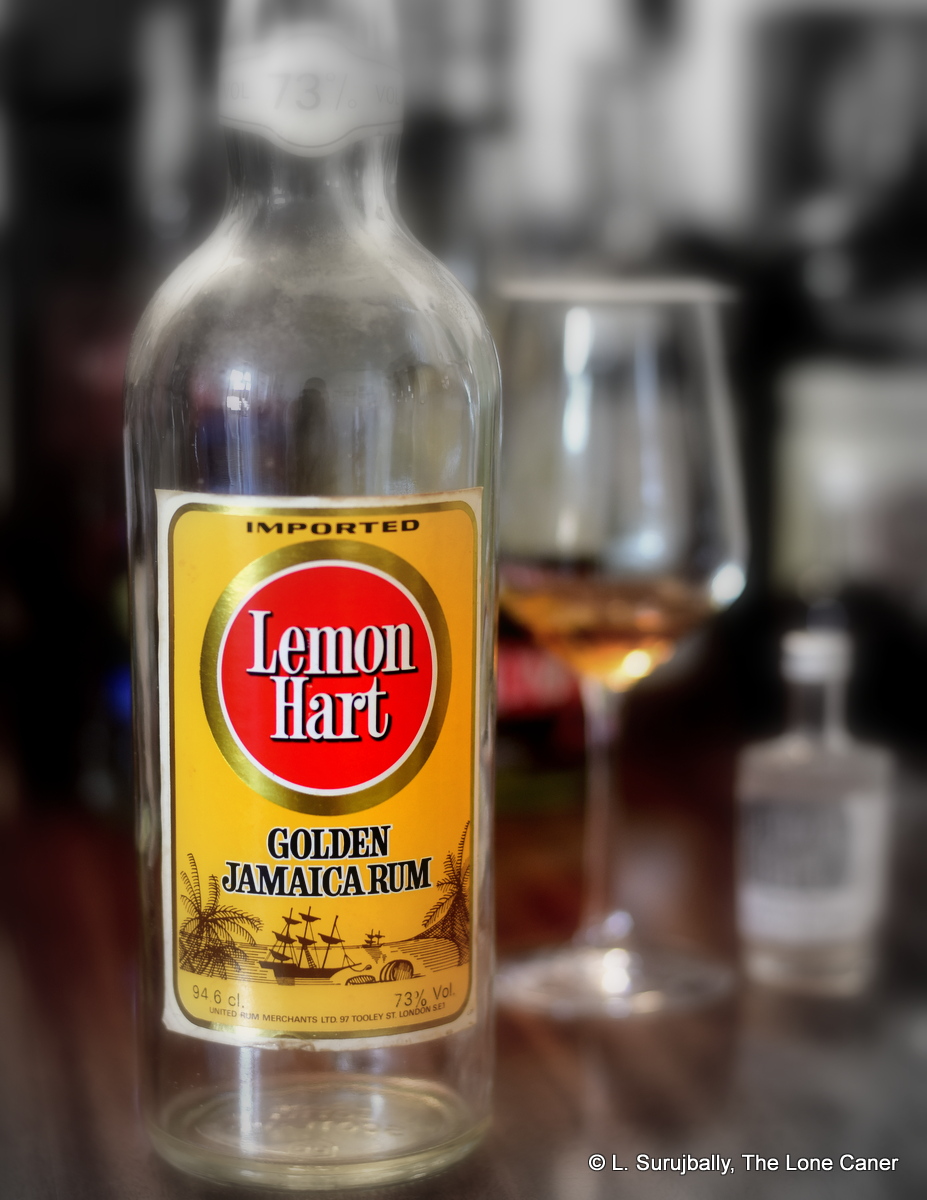 Rumaniacs Review #107 | R-0688
Rumaniacs Review #107 | R-0688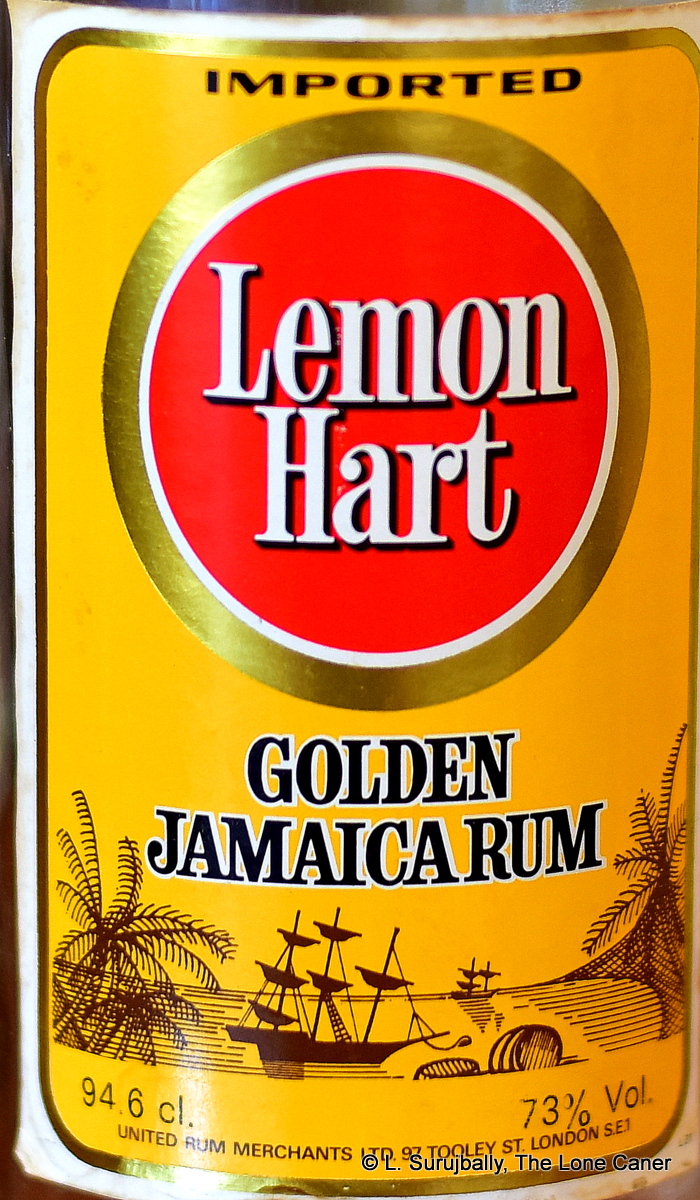 Palate – Waiting for this to open up is definitely the way to go, because with some patience, the bags of funk, soda pop, nail polish, red and yellow overripe fruits, grapes and raisins just become a taste avalanche across the tongue. It’s a very solid series of tastes, firm but not sharp unless you gulp it (not recommended) and once you get used to it, it settles down well to just providing every smidgen of taste of which it is capable.
Palate – Waiting for this to open up is definitely the way to go, because with some patience, the bags of funk, soda pop, nail polish, red and yellow overripe fruits, grapes and raisins just become a taste avalanche across the tongue. It’s a very solid series of tastes, firm but not sharp unless you gulp it (not recommended) and once you get used to it, it settles down well to just providing every smidgen of taste of which it is capable.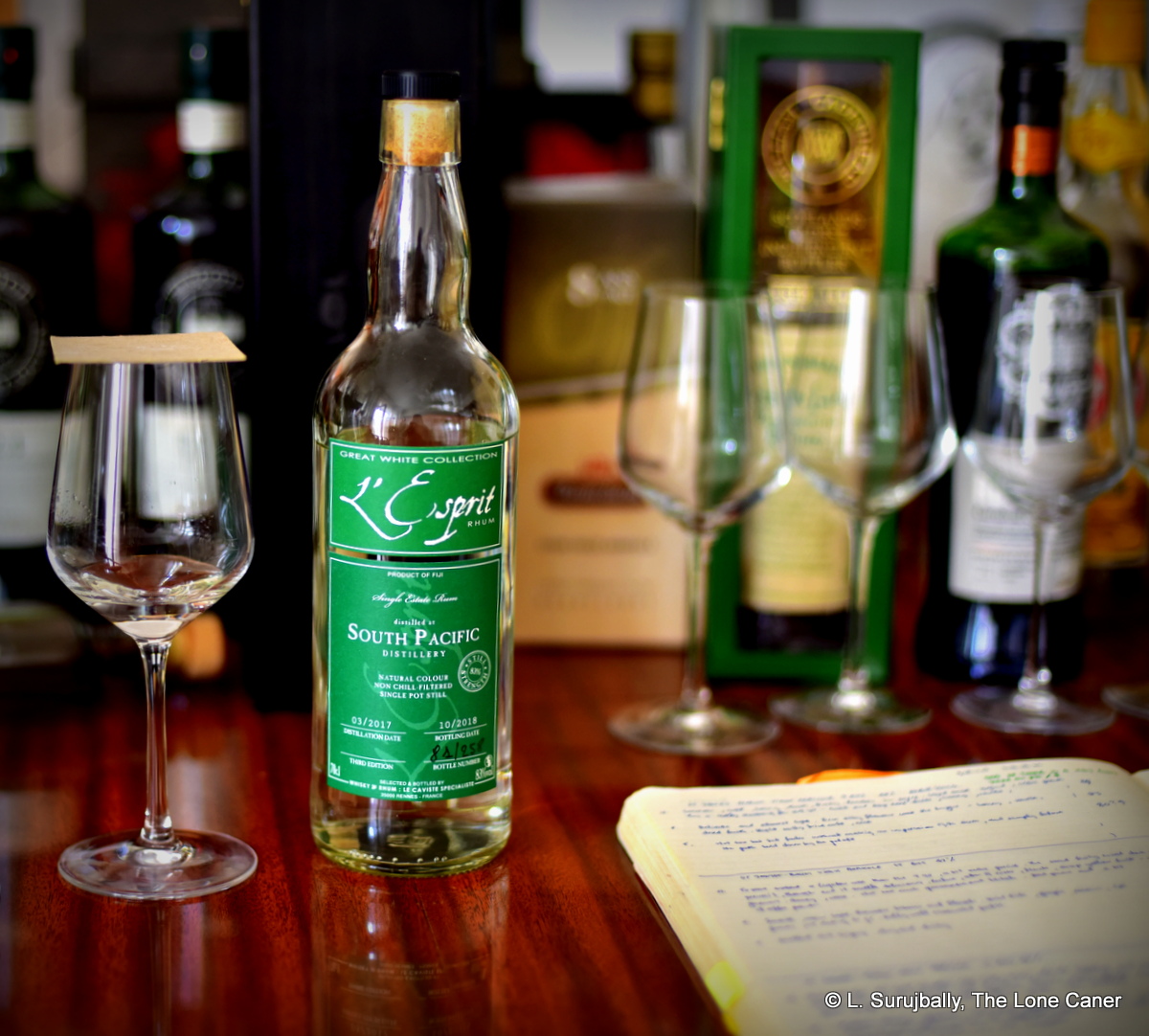
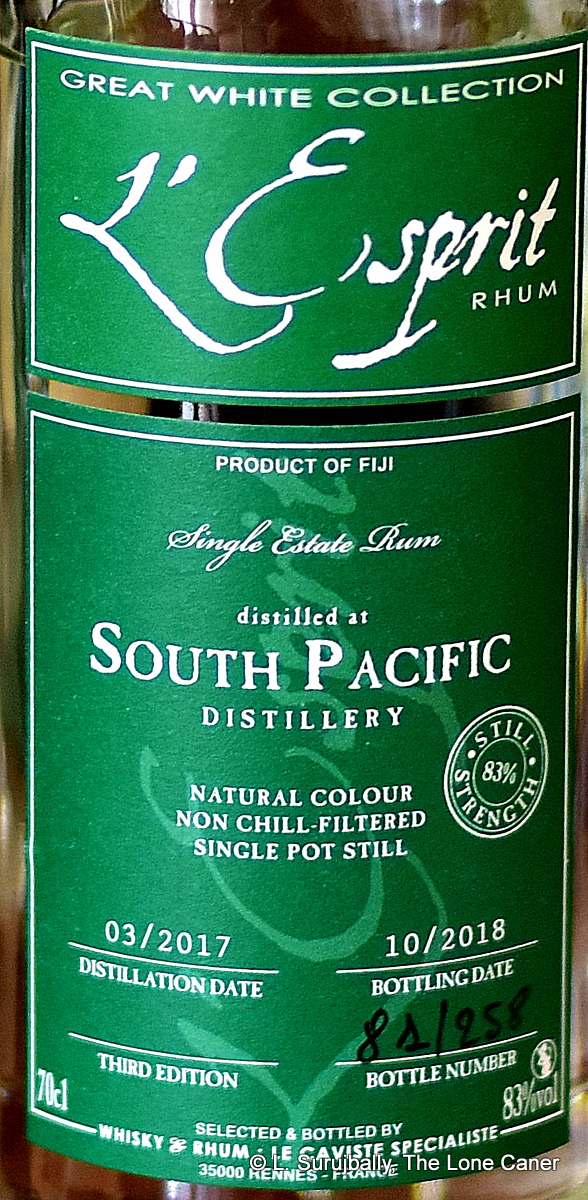 Whatever the case, the rum was as fierce as the Diamond, and even at a microscopically lower proof, it took no prisoners. It exploded right out of the glass with sharp, hot, violent aromas of tequila, rubber, salt, herbs and really good olive oil. If you blinked you could see it boiling. It swayed between sweet and salt, between soya, sugar water, squash, watermelon, papaya and the tartness of hard yellow mangoes, and to be honest, it felt like I was sniffing a bottle shaped mass of whup-ass (the sort of thing Guyanese call “regular”).
Whatever the case, the rum was as fierce as the Diamond, and even at a microscopically lower proof, it took no prisoners. It exploded right out of the glass with sharp, hot, violent aromas of tequila, rubber, salt, herbs and really good olive oil. If you blinked you could see it boiling. It swayed between sweet and salt, between soya, sugar water, squash, watermelon, papaya and the tartness of hard yellow mangoes, and to be honest, it felt like I was sniffing a bottle shaped mass of whup-ass (the sort of thing Guyanese call “regular”).
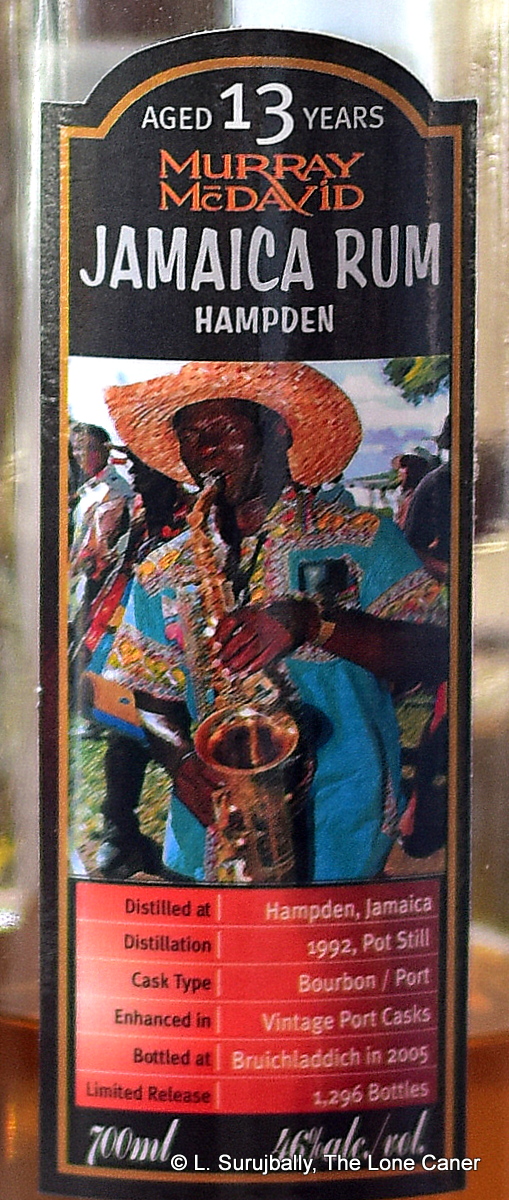 Tasting notes: definitely Jamaican, that hogo and funk was unmistakable, though it seemed more muted than the fierce cask strength Hampdens we’ve been seeing of late. It smelled initially of pencil shavings, crisp acetones, nail polish remover, a freshly painted room and glue. After opening up, I went back some minutes later and found softer aromas – red wine, molasses, honey, chocolate, and cream cheese and salted butter on fresh croissants, really yummy. And this is not to ignore the ever-present sense of fruitiness – dark grapes, black cherries, ripe mangoes, papayas, gooseberries and some bananas, just enough to round off the entire nose.
Tasting notes: definitely Jamaican, that hogo and funk was unmistakable, though it seemed more muted than the fierce cask strength Hampdens we’ve been seeing of late. It smelled initially of pencil shavings, crisp acetones, nail polish remover, a freshly painted room and glue. After opening up, I went back some minutes later and found softer aromas – red wine, molasses, honey, chocolate, and cream cheese and salted butter on fresh croissants, really yummy. And this is not to ignore the ever-present sense of fruitiness – dark grapes, black cherries, ripe mangoes, papayas, gooseberries and some bananas, just enough to round off the entire nose.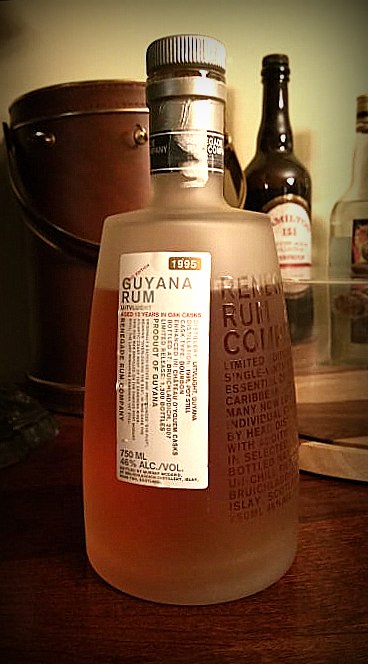
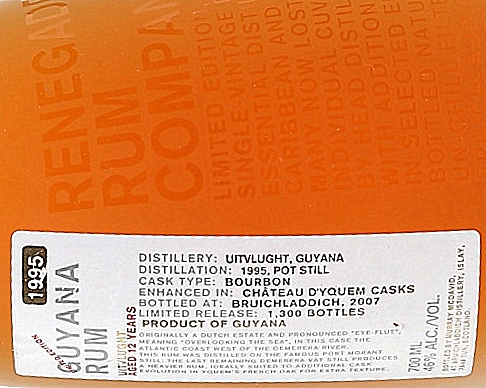
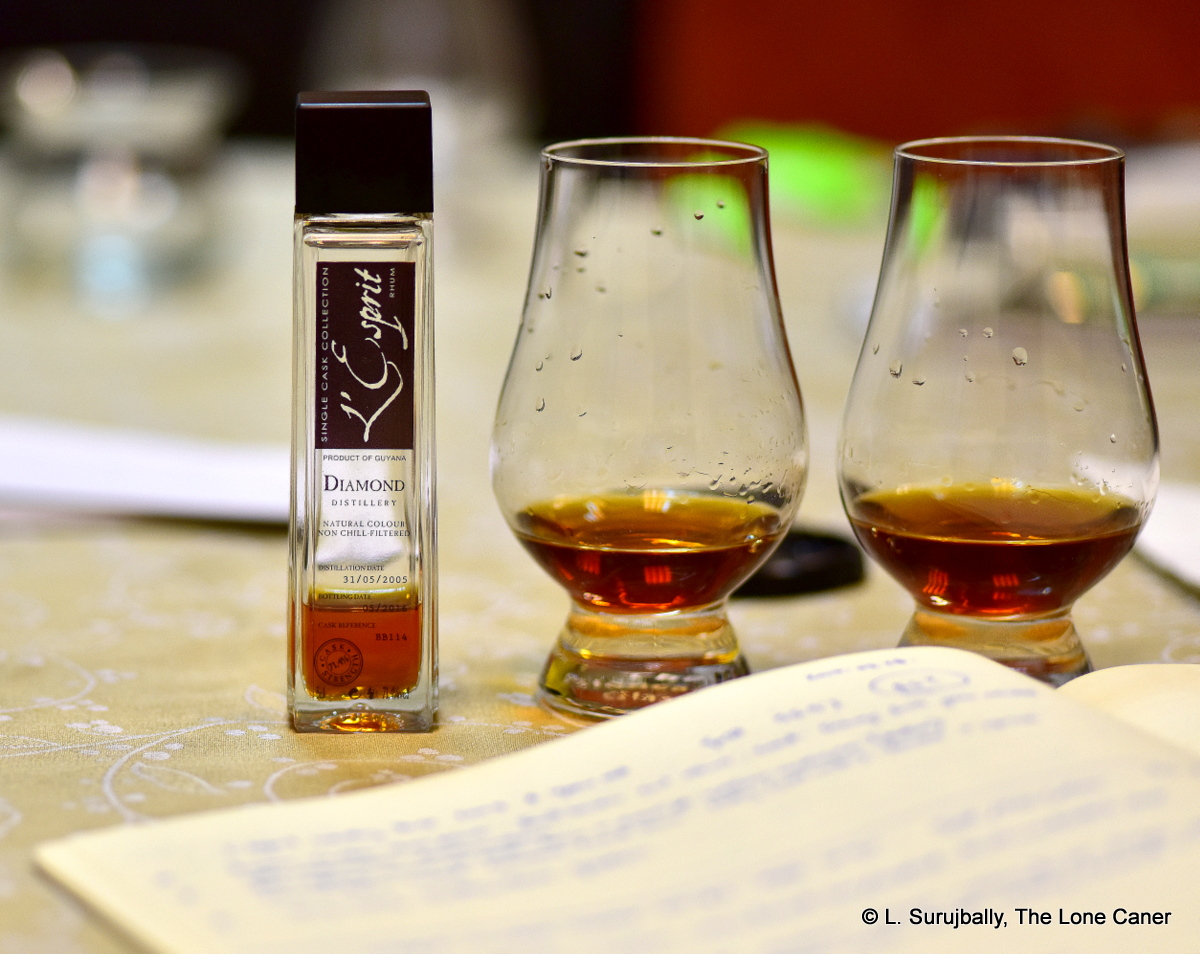
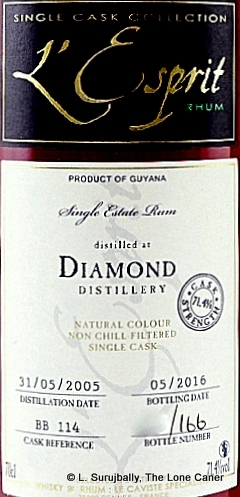 What’s all the more astounding about
What’s all the more astounding about 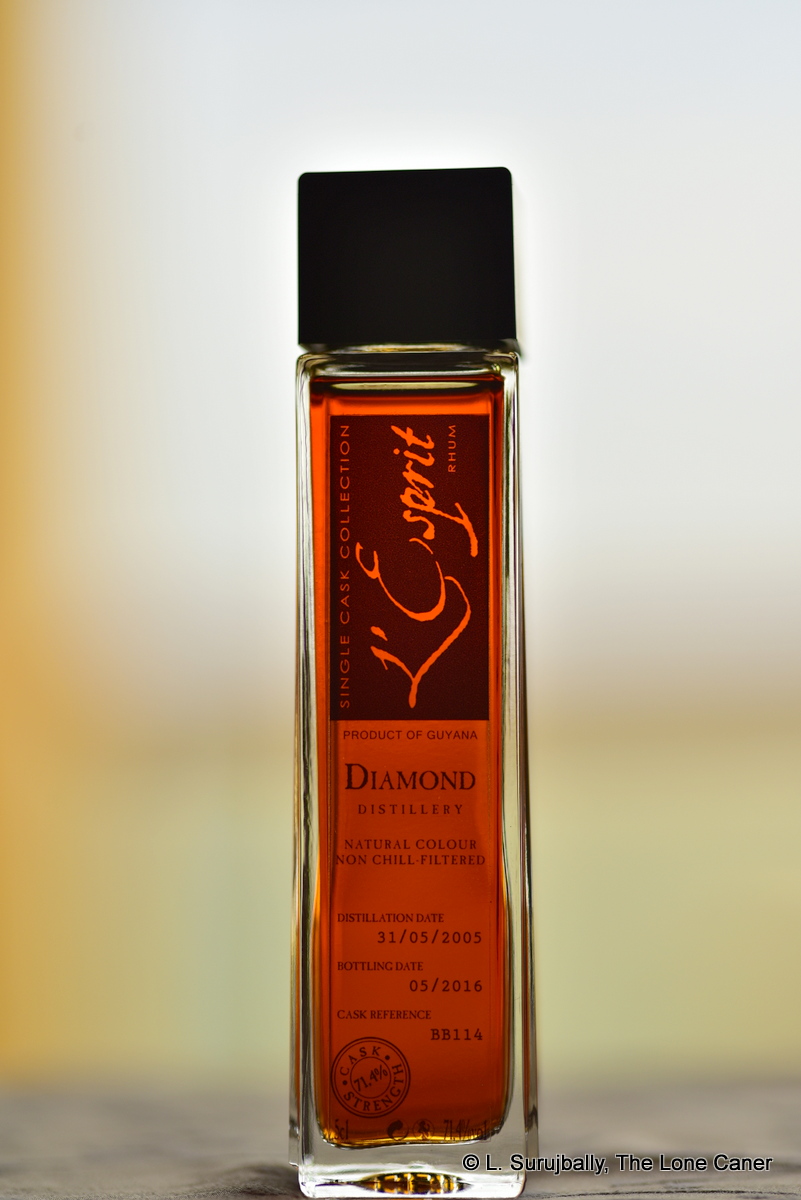 Based on how it initially nosed, I started out believing this was a wooden still — by the end, I was no longer so sure. The profile actually reminded me more of the
Based on how it initially nosed, I started out believing this was a wooden still — by the end, I was no longer so sure. The profile actually reminded me more of the 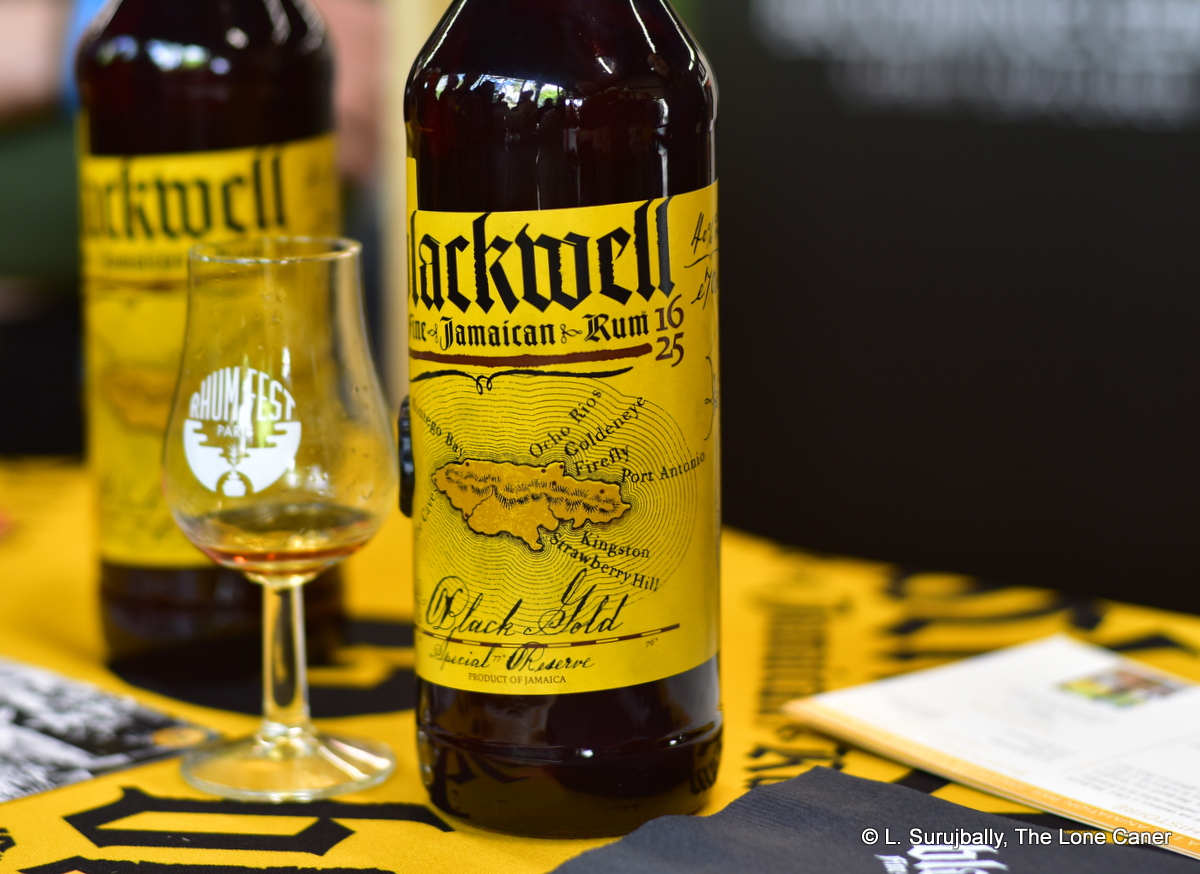
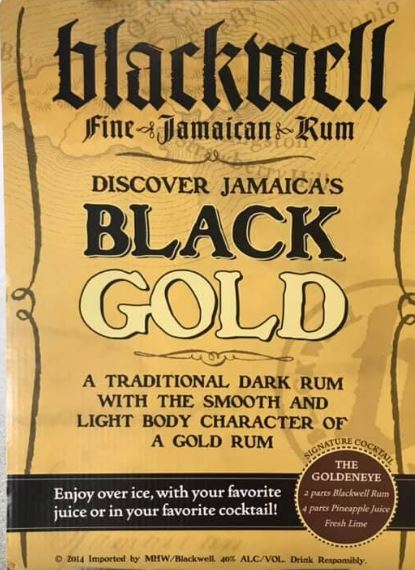 With all due respect to the makers who expended effort and sweat to bring this to market, I gotta be honest and say the Blackwell Fine Jamaican Rum doesn’t impress. Part of that is the promo materials, which remark that it is “A traditional dark rum with the smooth and light body character of a gold rum.” Wait, what? Even Peter Holland usually the most easy going and sanguine of men, was forced to ask in
With all due respect to the makers who expended effort and sweat to bring this to market, I gotta be honest and say the Blackwell Fine Jamaican Rum doesn’t impress. Part of that is the promo materials, which remark that it is “A traditional dark rum with the smooth and light body character of a gold rum.” Wait, what? Even Peter Holland usually the most easy going and sanguine of men, was forced to ask in 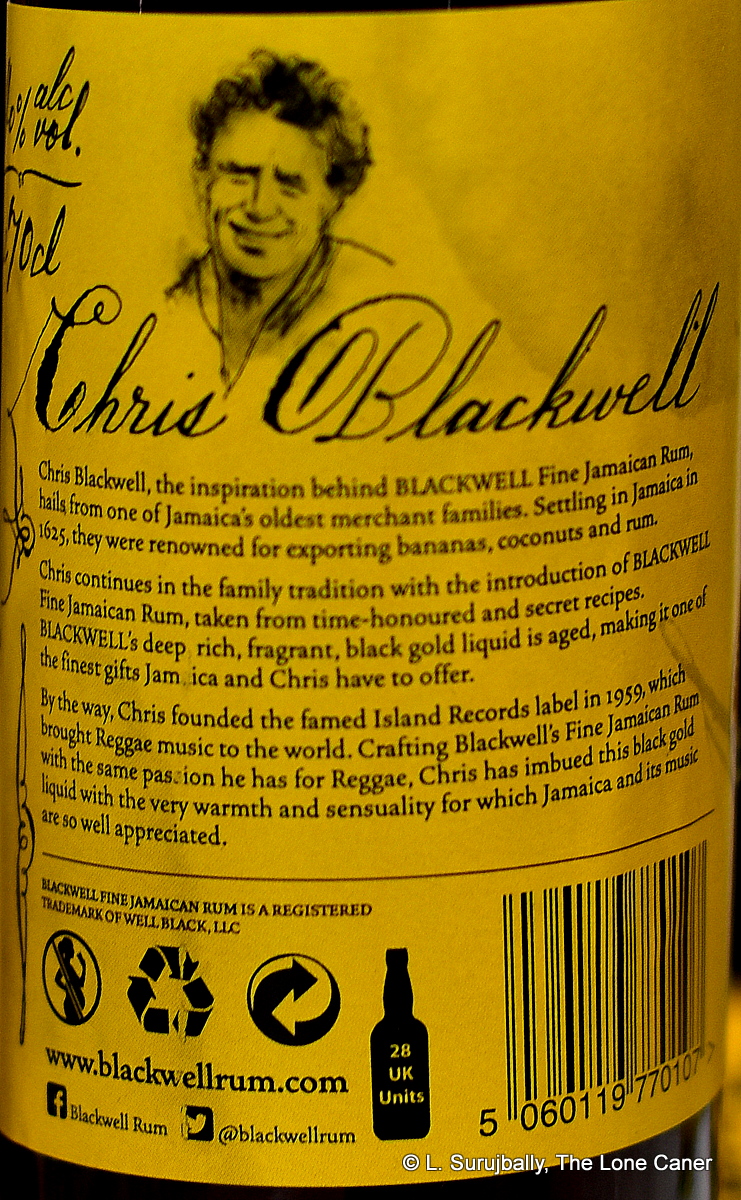 With respect to the good stuff from around the island — and these days, there’s so much of it sloshing about — this one is feels like an afterthought, a personal pet project rather than a serious commercial endeavour, and I’m at something of a loss to say who it’s for. Fans of the quiet, light rums of twenty years ago? Tiki lovers? Barflies? Bartenders? Beginners now getting into the pantheon? Maybe it’s just for the maker — after all, it’s been around since 2012, yet how many of you can actually say you’ve heard of it, let alone tried a shot?
With respect to the good stuff from around the island — and these days, there’s so much of it sloshing about — this one is feels like an afterthought, a personal pet project rather than a serious commercial endeavour, and I’m at something of a loss to say who it’s for. Fans of the quiet, light rums of twenty years ago? Tiki lovers? Barflies? Bartenders? Beginners now getting into the pantheon? Maybe it’s just for the maker — after all, it’s been around since 2012, yet how many of you can actually say you’ve heard of it, let alone tried a shot? 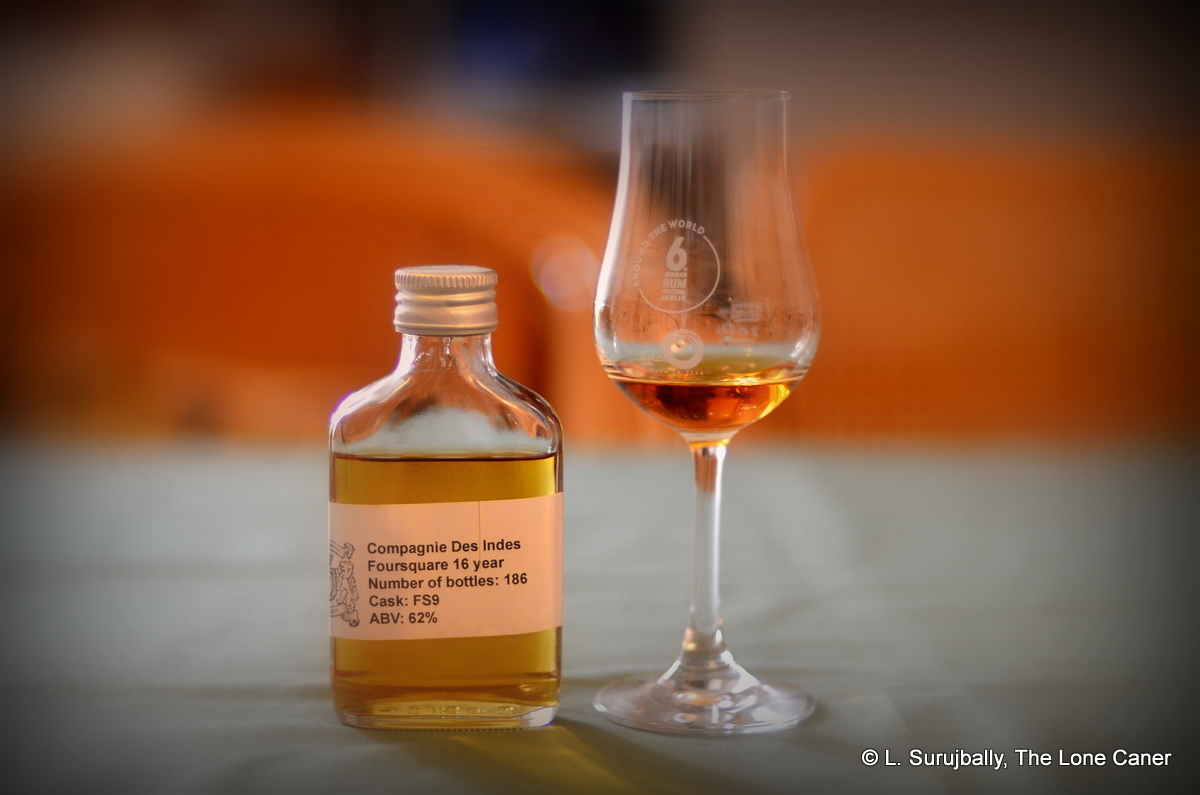
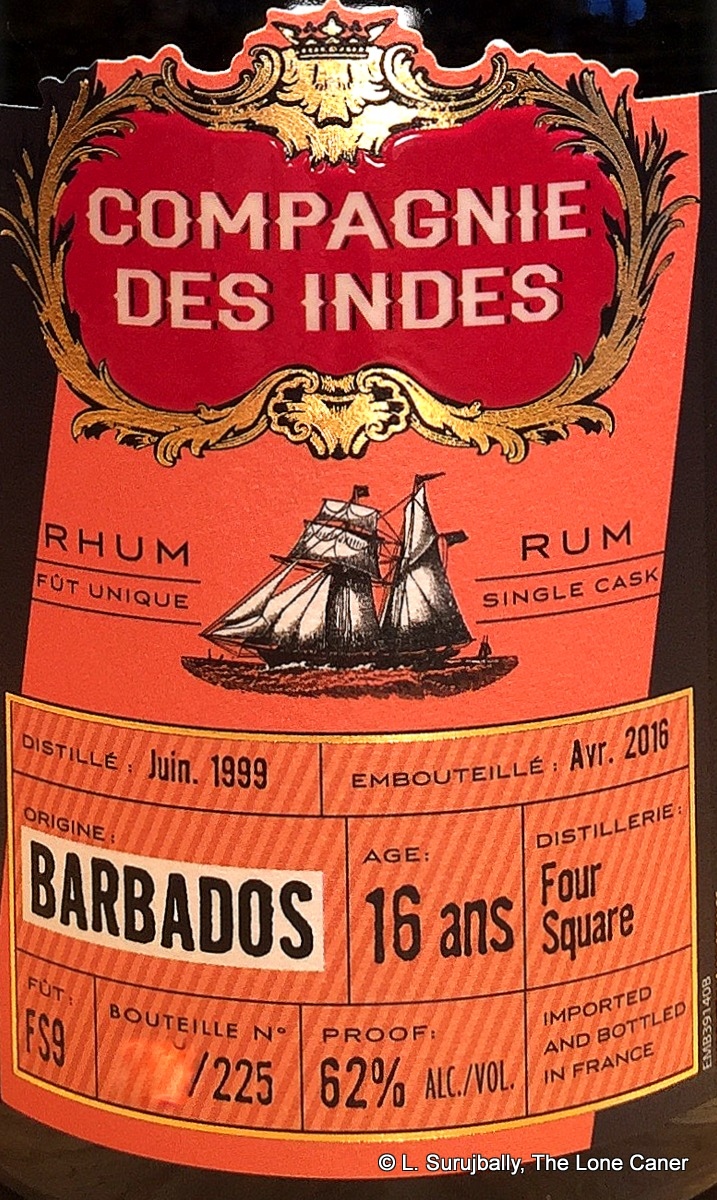 I don’t have any other observations to make, so let’s jump right in without further ado. Nose first – in a word, luscious. Although there are some salty hints to begin with, the overwhelming initial smells are of ripe black grapes, prunes, honey, and plums, with some flambeed bananas and brown sugar coming up right behind. The heat and bite of a 62% strength is very well controlled, and it presents as firm and strong without any bitchiness. After leaving it to open a few minutes, there are some fainter aromas of red/black olives, not too salty, as well as the bitter astringency of very strong black tea, and oak, mellowed by the softness of a musky caramel and vanilla, plus a sprinkling of herbs and maybe cinnamon. So quite a bit going on in there, and well worth taking one’s time with and not rushing to taste.
I don’t have any other observations to make, so let’s jump right in without further ado. Nose first – in a word, luscious. Although there are some salty hints to begin with, the overwhelming initial smells are of ripe black grapes, prunes, honey, and plums, with some flambeed bananas and brown sugar coming up right behind. The heat and bite of a 62% strength is very well controlled, and it presents as firm and strong without any bitchiness. After leaving it to open a few minutes, there are some fainter aromas of red/black olives, not too salty, as well as the bitter astringency of very strong black tea, and oak, mellowed by the softness of a musky caramel and vanilla, plus a sprinkling of herbs and maybe cinnamon. So quite a bit going on in there, and well worth taking one’s time with and not rushing to taste.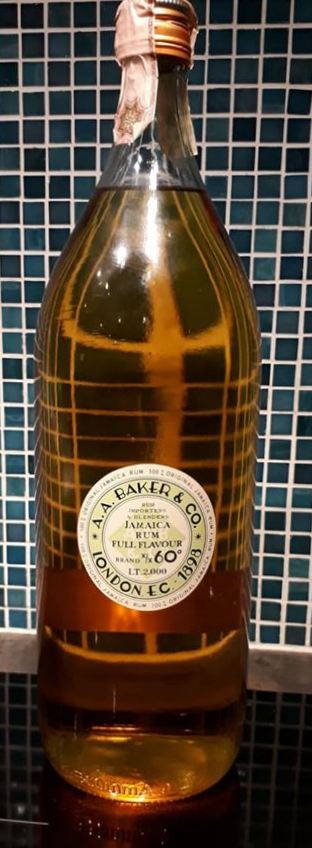
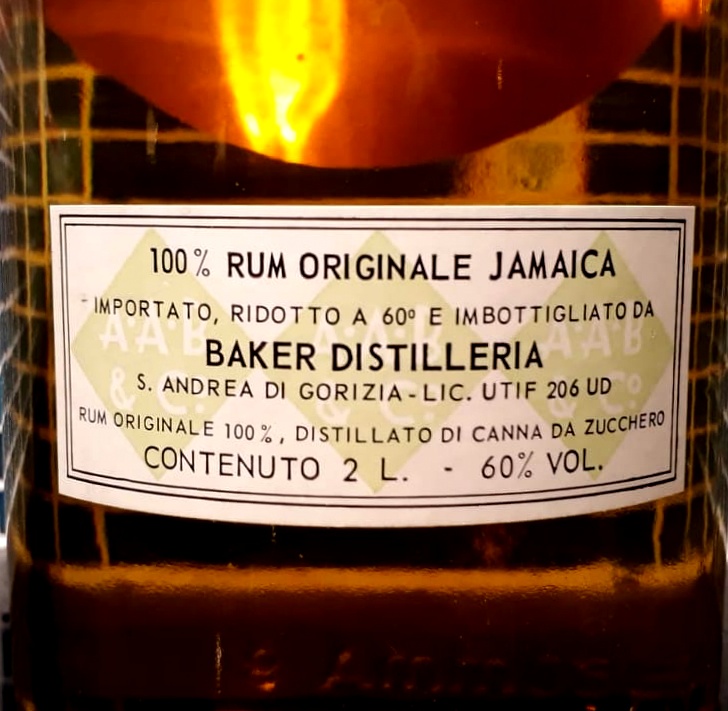
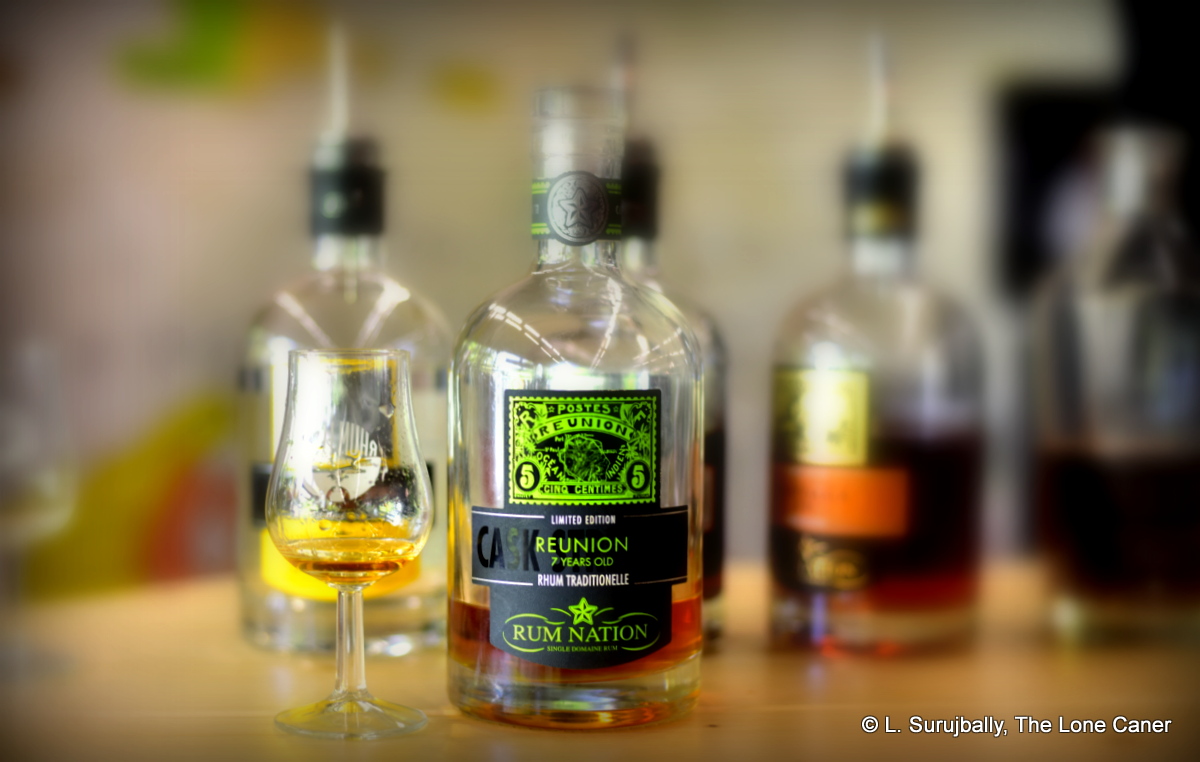
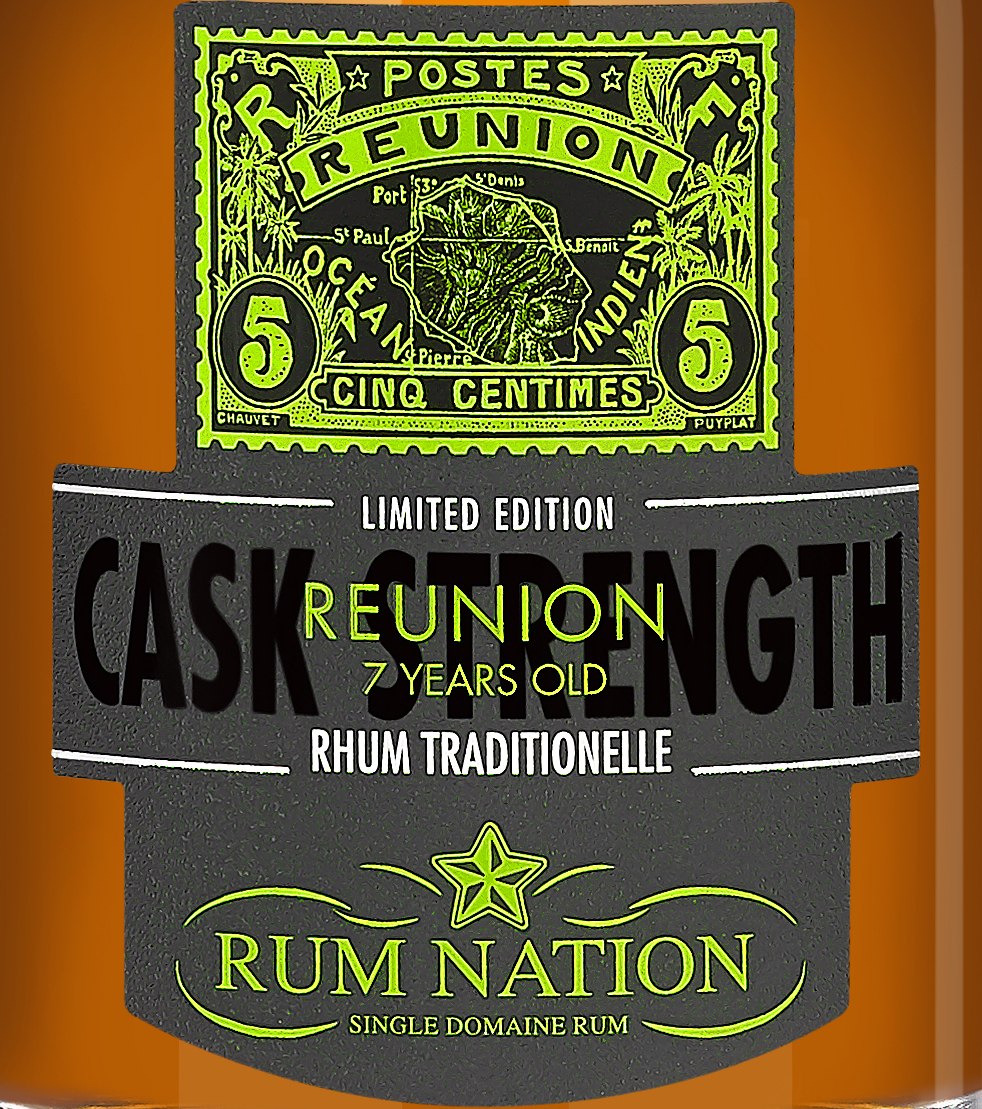
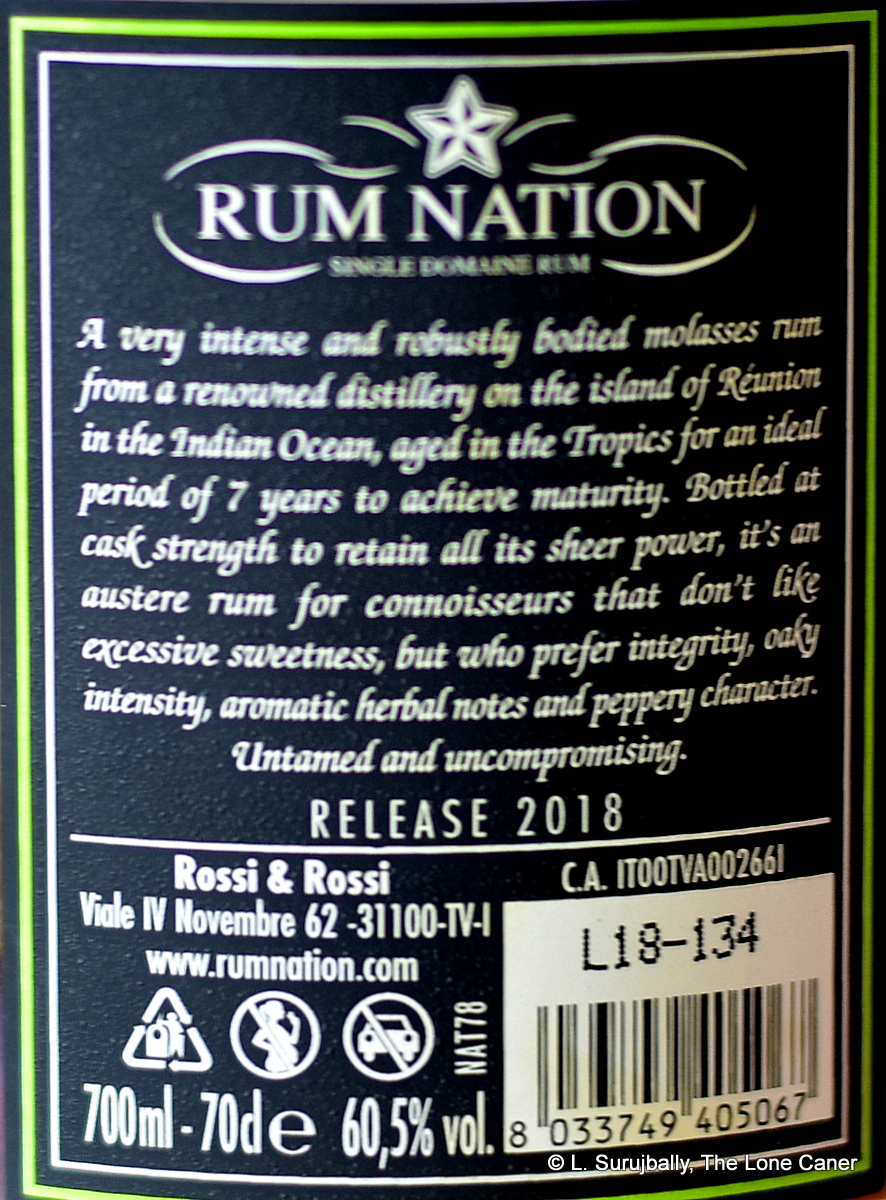 Some rums falter on the taste after opening up with a nose of uncommon quality – fortunately Rum Nation’s Réunion Cask Strength rum (to give it its full name) does not drop the ball. It’s sharp and crisp at the initial entry, mellowing out over time as one gets used to the fierce strength. It presents an interesting combination of fruitiness and muskiness and crispness, all at once – vanilla, lychee, apples, green grapes, mixing it up with ripe black cherries, yellow mangoes, lemongrass, leather, papaya; and behind all that is brine, olives, the earthy tang of a soya (easy on the vegetable soup), a twitch of wet cigarette tobacco (rather disgusting), bitter oak, and something vaguely medicinal. It’s something like a Hampden or WP, yet not — it’s too distinctively itself for that. It displays a musky tawniness, a very strong and sharp texture, with softer elements planing away the roughness of the initial attack. Somewhat over-oaked perhaps but somehow it all works really well, and the finish is similarly generous with what it provides — long and dry and spicy, with some caramel, stewed apples, green grapes, cider, balsamic vinegar, and a tannic bitterness of oak, barely contained (this may be the weakest point of the rum).
Some rums falter on the taste after opening up with a nose of uncommon quality – fortunately Rum Nation’s Réunion Cask Strength rum (to give it its full name) does not drop the ball. It’s sharp and crisp at the initial entry, mellowing out over time as one gets used to the fierce strength. It presents an interesting combination of fruitiness and muskiness and crispness, all at once – vanilla, lychee, apples, green grapes, mixing it up with ripe black cherries, yellow mangoes, lemongrass, leather, papaya; and behind all that is brine, olives, the earthy tang of a soya (easy on the vegetable soup), a twitch of wet cigarette tobacco (rather disgusting), bitter oak, and something vaguely medicinal. It’s something like a Hampden or WP, yet not — it’s too distinctively itself for that. It displays a musky tawniness, a very strong and sharp texture, with softer elements planing away the roughness of the initial attack. Somewhat over-oaked perhaps but somehow it all works really well, and the finish is similarly generous with what it provides — long and dry and spicy, with some caramel, stewed apples, green grapes, cider, balsamic vinegar, and a tannic bitterness of oak, barely contained (this may be the weakest point of the rum).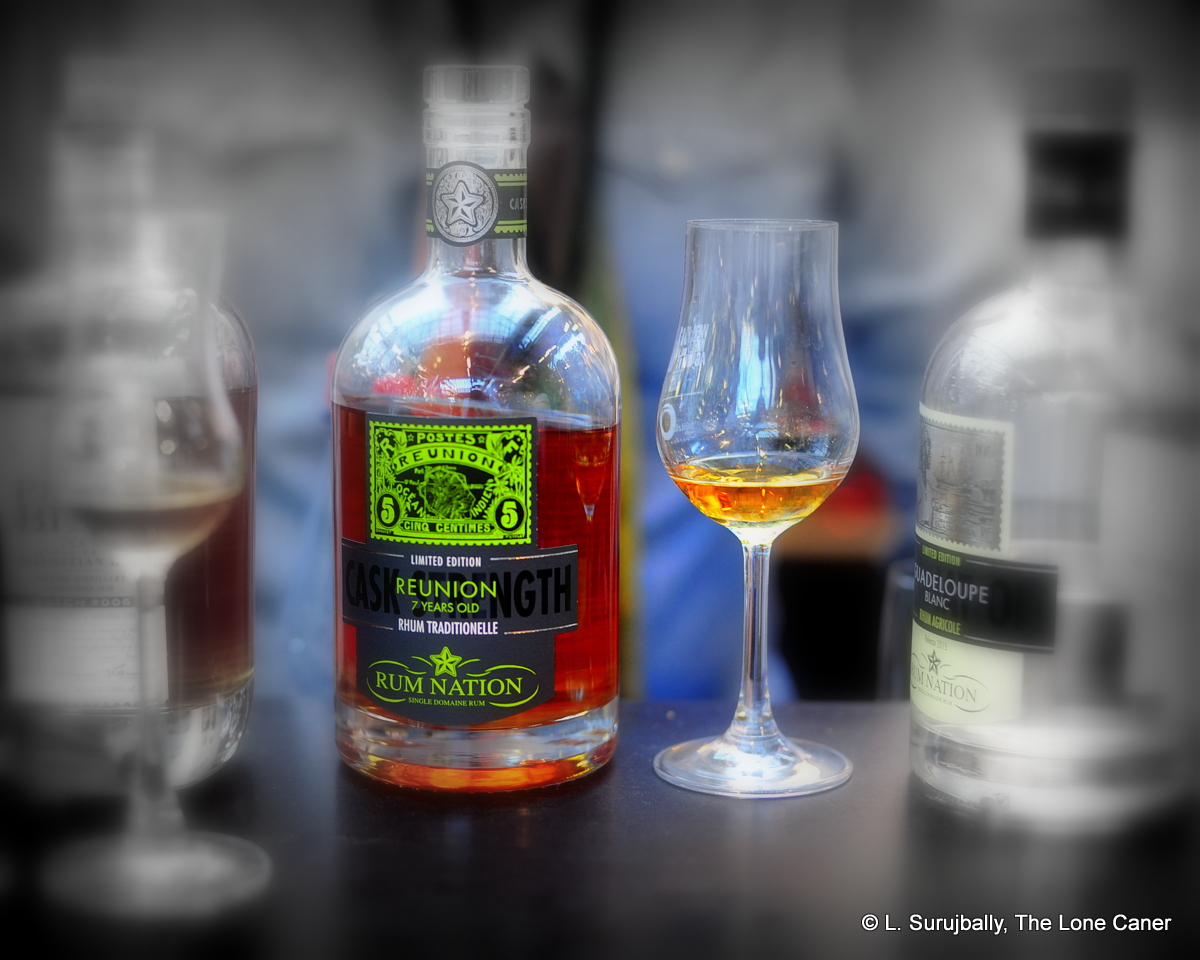


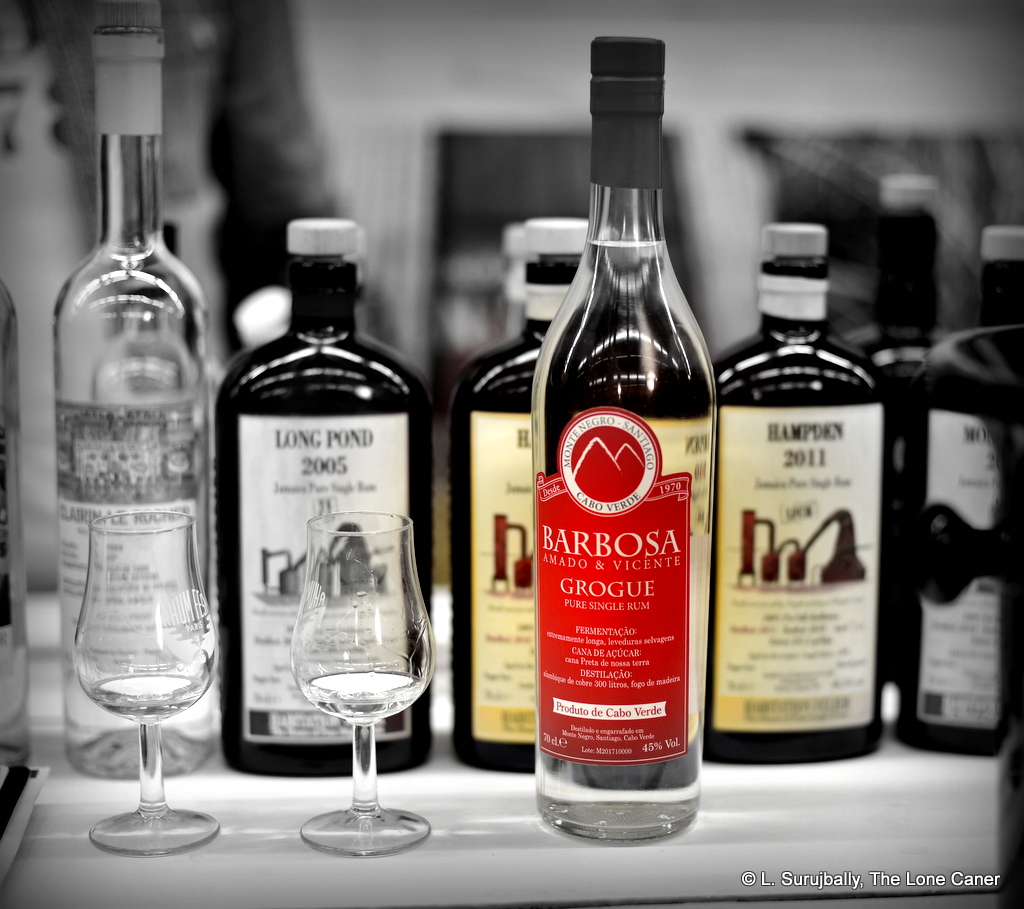
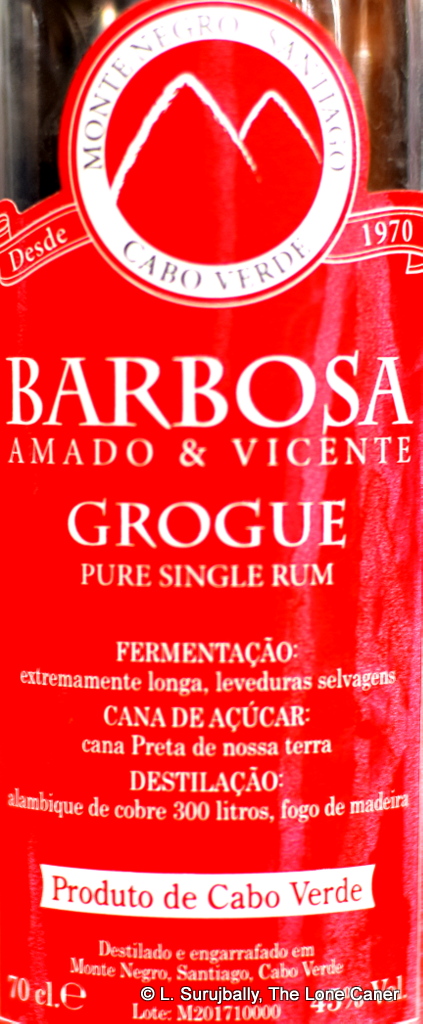 This was also the case when tasted. The bright and clean fruity-ester notes were more in evidence here than on the nose — green apples, sultanas, hard yellow mangoes, thyme, more pineapples, a bag of white guavas and watery pears. There was a hint of danger in the hint of cucumbers in white vinegar with a pimento or two floating around, but this never seriously came forward, a hint was all you got; and at best, with some concentration, there were some additional herbs (dill, cilantro), grass, sugar water and maybe a few more olives. I particularly liked the mild finish, by the way – clear and fruity and minty, with thyme, wet grass, and some almonds and white chocolate, sweet and unassuming, just right for what had come before.
This was also the case when tasted. The bright and clean fruity-ester notes were more in evidence here than on the nose — green apples, sultanas, hard yellow mangoes, thyme, more pineapples, a bag of white guavas and watery pears. There was a hint of danger in the hint of cucumbers in white vinegar with a pimento or two floating around, but this never seriously came forward, a hint was all you got; and at best, with some concentration, there were some additional herbs (dill, cilantro), grass, sugar water and maybe a few more olives. I particularly liked the mild finish, by the way – clear and fruity and minty, with thyme, wet grass, and some almonds and white chocolate, sweet and unassuming, just right for what had come before.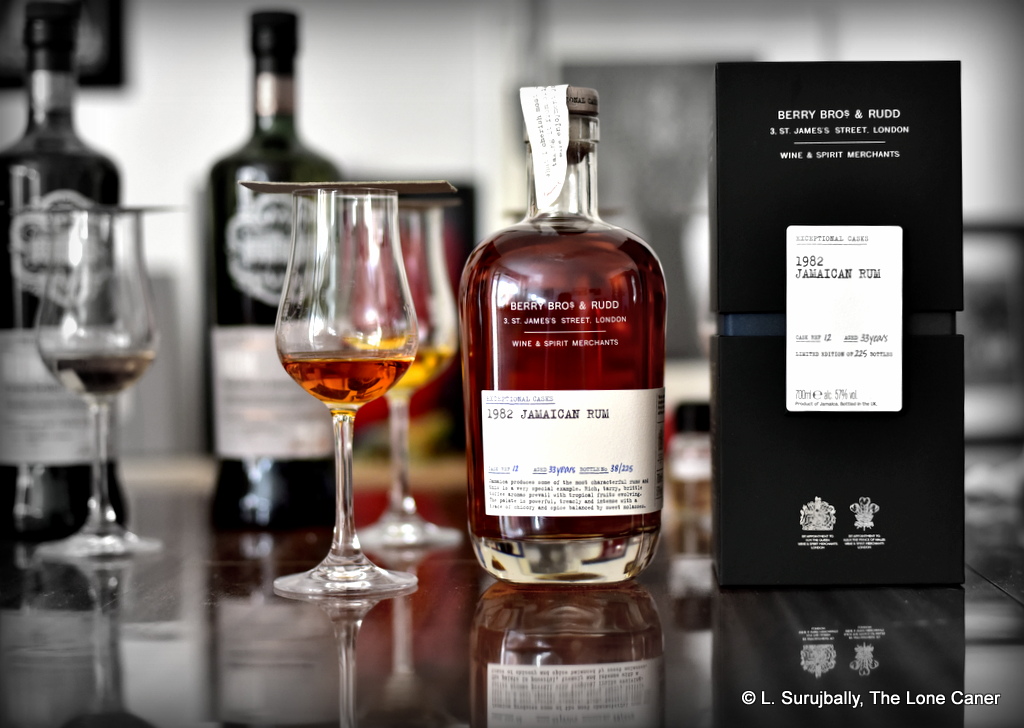
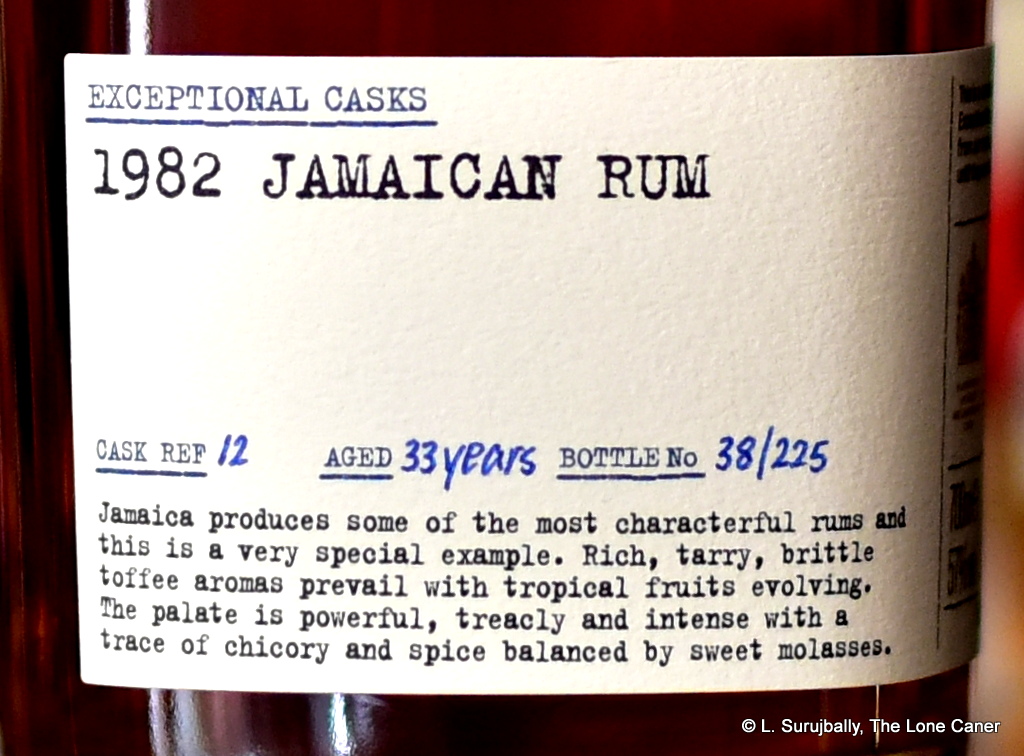

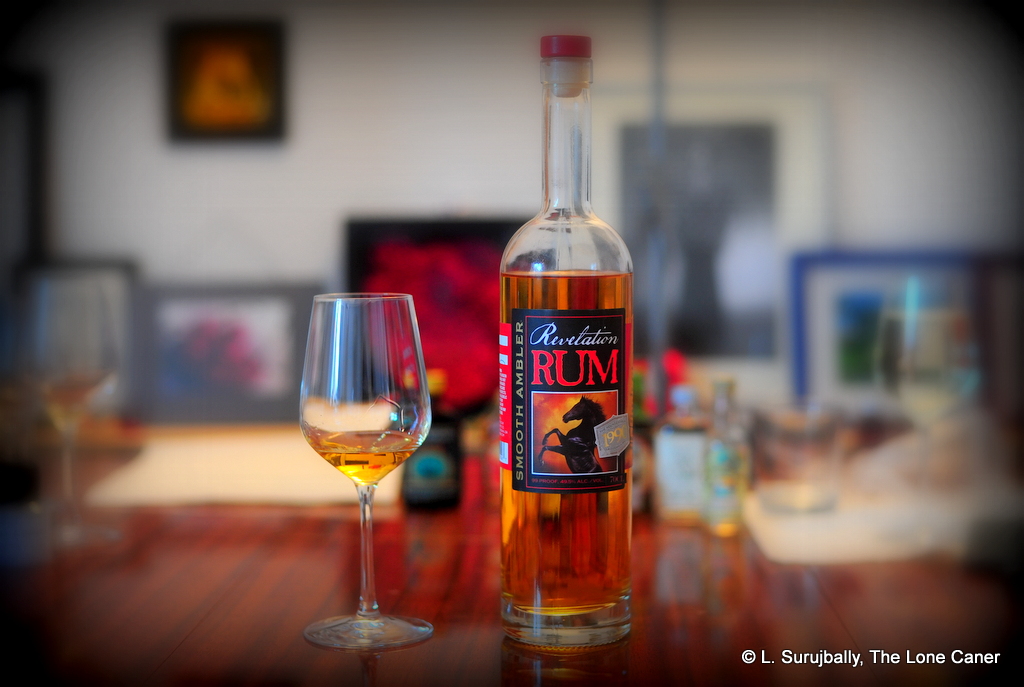

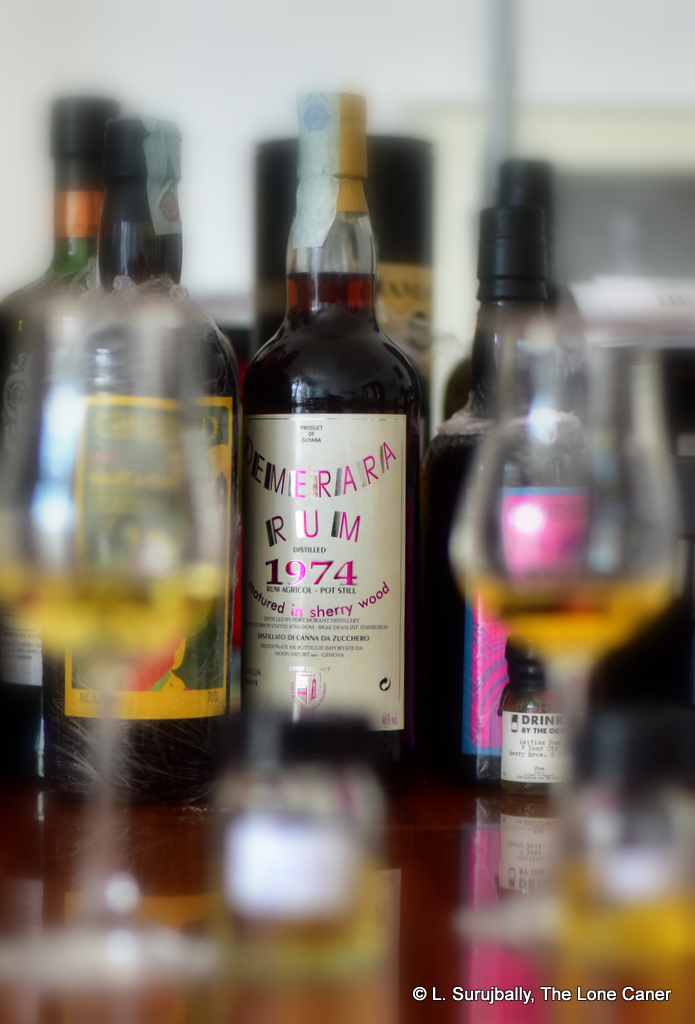
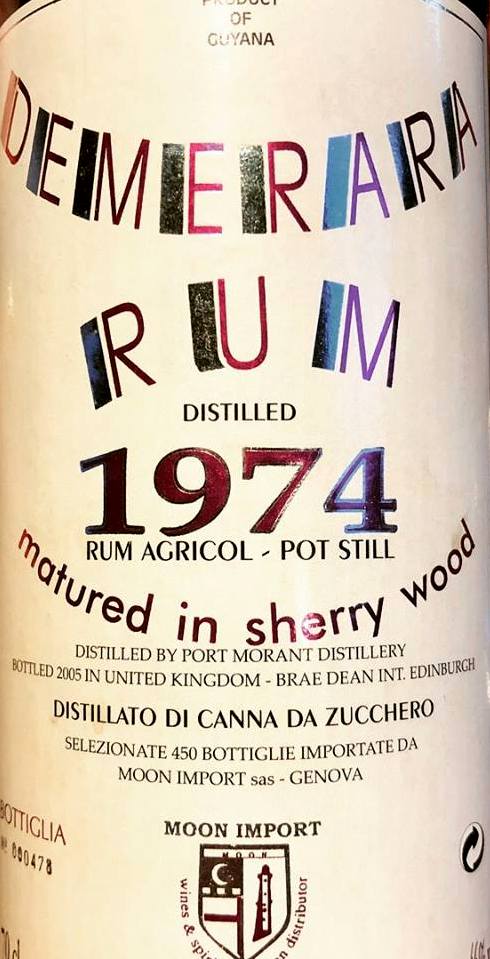 So the search for more info begins. Now, if you’re looking on
So the search for more info begins. Now, if you’re looking on 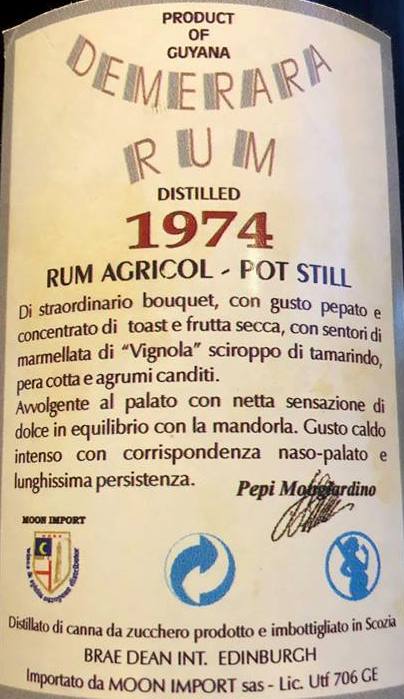 With respect to the palate, at 46%, much as I wish it were stronger, the rum is simply luscious, perhaps too much so – had it been sweeter (and it isn’t) it might have edged dangerously close to a cloying mishmash, but as it is, the cat’s-tongue-rough-and-smooth profile was excellent. It melded leather and the creaminess of salt butter and brie with licorice, brown sugar, molasses and butter cookies (as a hat tip to them barking-mad northern vikings, I’ll say were Danish). Other tastes emerge: prunes and dark fruit – lots of dark fruit. Blackberries, plums, dates. Very dense, layer upon layer of tastes that combined really really well, and providing a relatively gentle but tasteful summary on the finish. Sometimes things fall apart (or disappear entirely) at this stage, but here it’s like a never ending segue that reminds us of cedar, sawdust, sugar raisins, plums, prunes, and chocolate oranges.
With respect to the palate, at 46%, much as I wish it were stronger, the rum is simply luscious, perhaps too much so – had it been sweeter (and it isn’t) it might have edged dangerously close to a cloying mishmash, but as it is, the cat’s-tongue-rough-and-smooth profile was excellent. It melded leather and the creaminess of salt butter and brie with licorice, brown sugar, molasses and butter cookies (as a hat tip to them barking-mad northern vikings, I’ll say were Danish). Other tastes emerge: prunes and dark fruit – lots of dark fruit. Blackberries, plums, dates. Very dense, layer upon layer of tastes that combined really really well, and providing a relatively gentle but tasteful summary on the finish. Sometimes things fall apart (or disappear entirely) at this stage, but here it’s like a never ending segue that reminds us of cedar, sawdust, sugar raisins, plums, prunes, and chocolate oranges.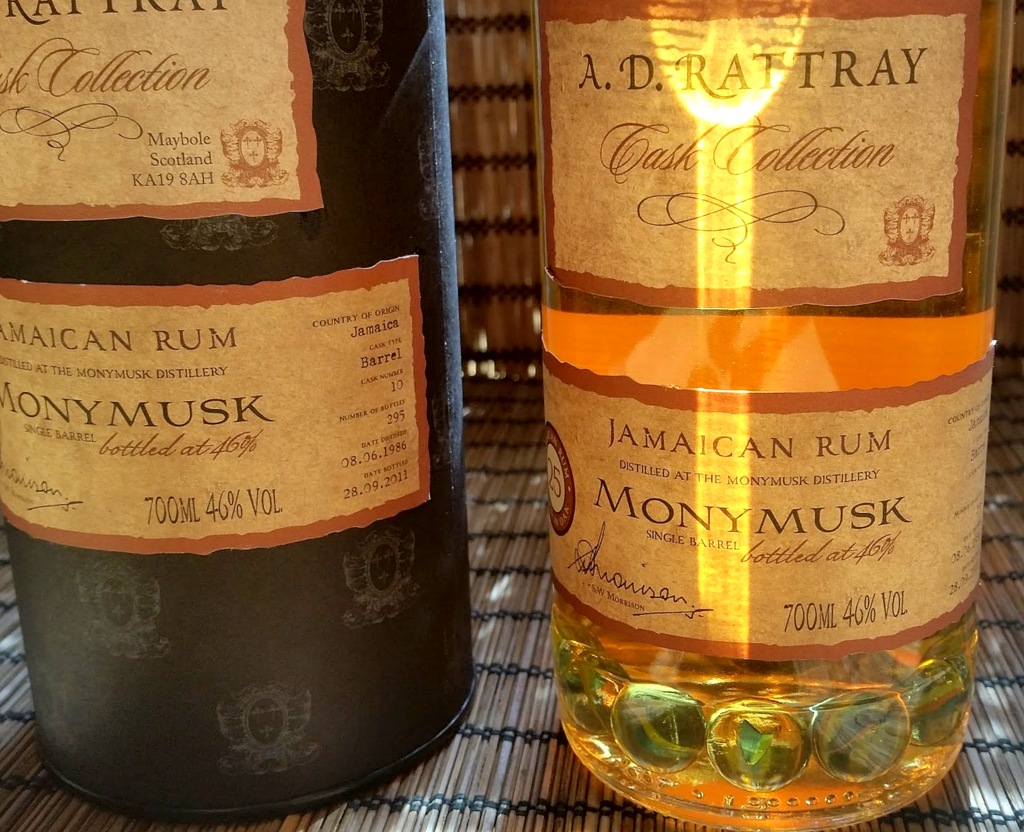
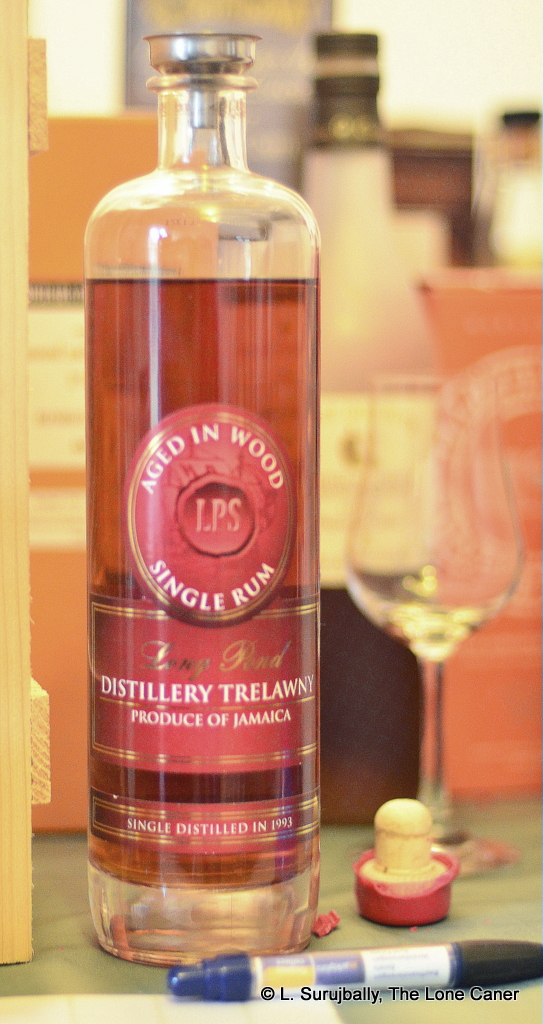 Until
Until 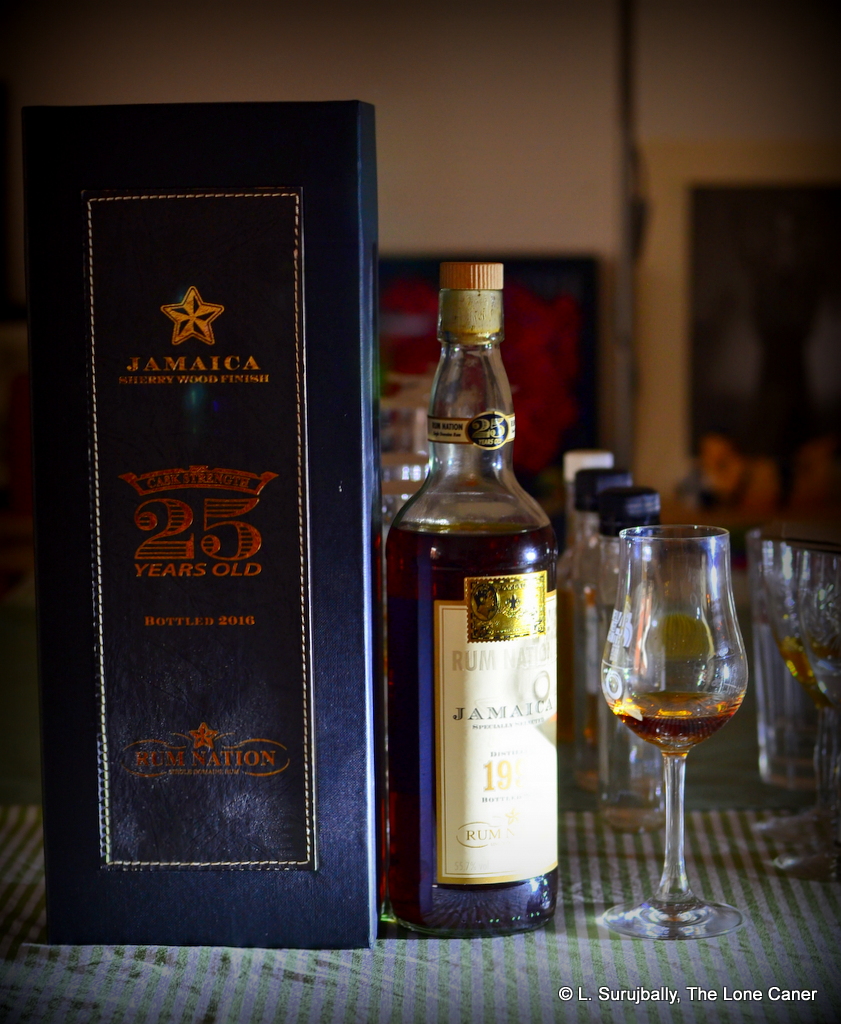
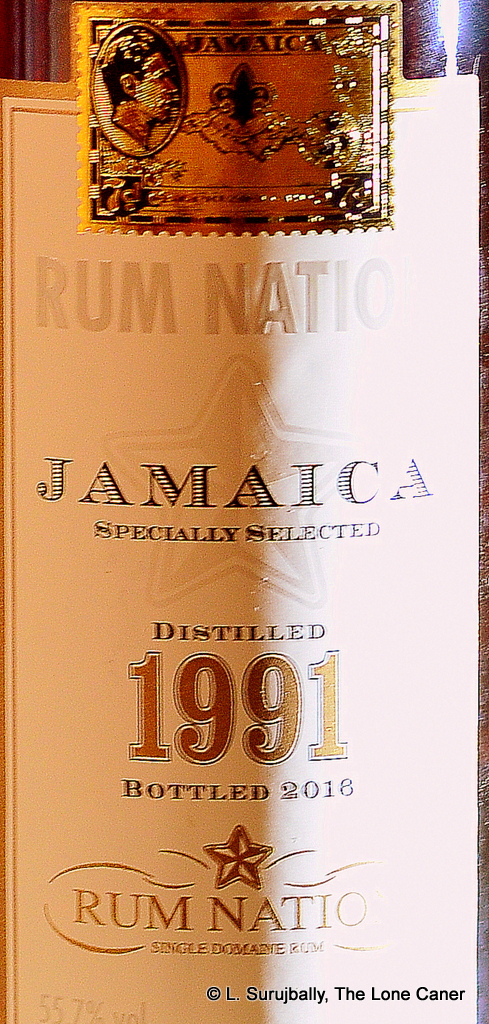 And for anyone who enjoys sipping rich Jamaicans that don’t stray too far into insanity (the
And for anyone who enjoys sipping rich Jamaicans that don’t stray too far into insanity (the 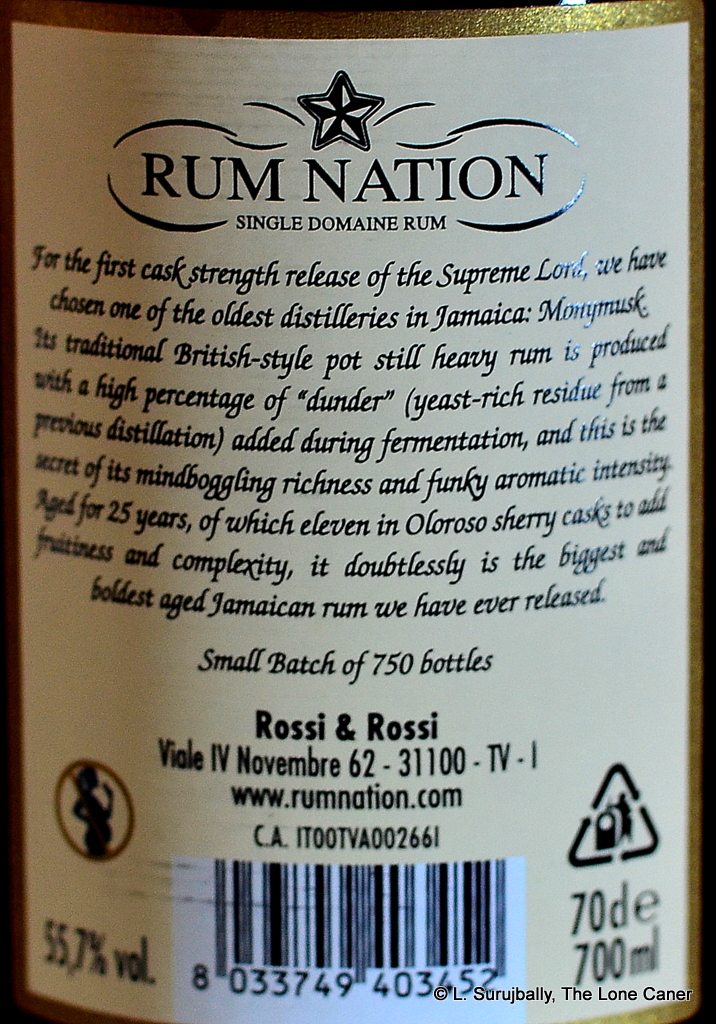 The rum continues along the path set by all the seven Supreme Lords that came before it, and since I’ve not tried them all, I can’t say whether others are better, or if this one eclipses the lot. What I do know is that they are among the best series of Jamaican rums released by any independent, among the oldest, and a key component of my own evolving rum education.
The rum continues along the path set by all the seven Supreme Lords that came before it, and since I’ve not tried them all, I can’t say whether others are better, or if this one eclipses the lot. What I do know is that they are among the best series of Jamaican rums released by any independent, among the oldest, and a key component of my own evolving rum education. 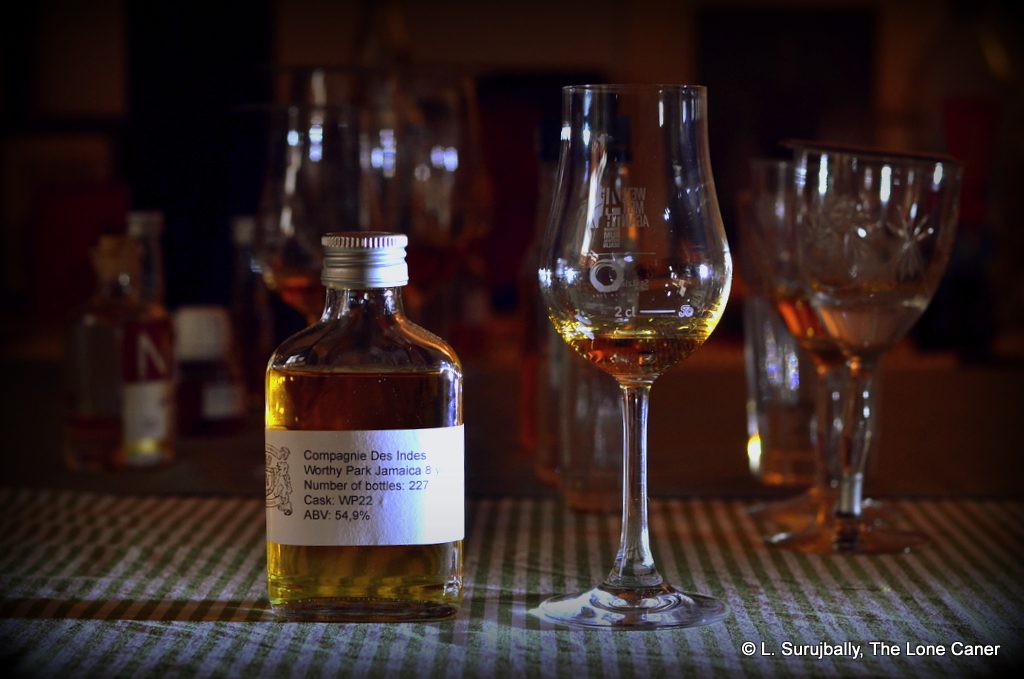
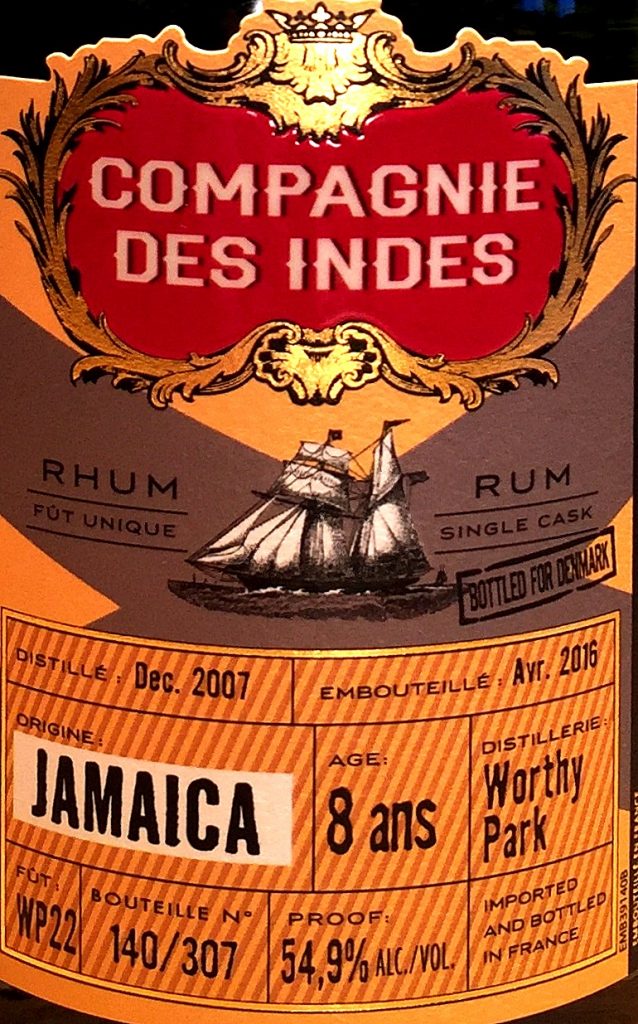 This brings us to the
This brings us to the 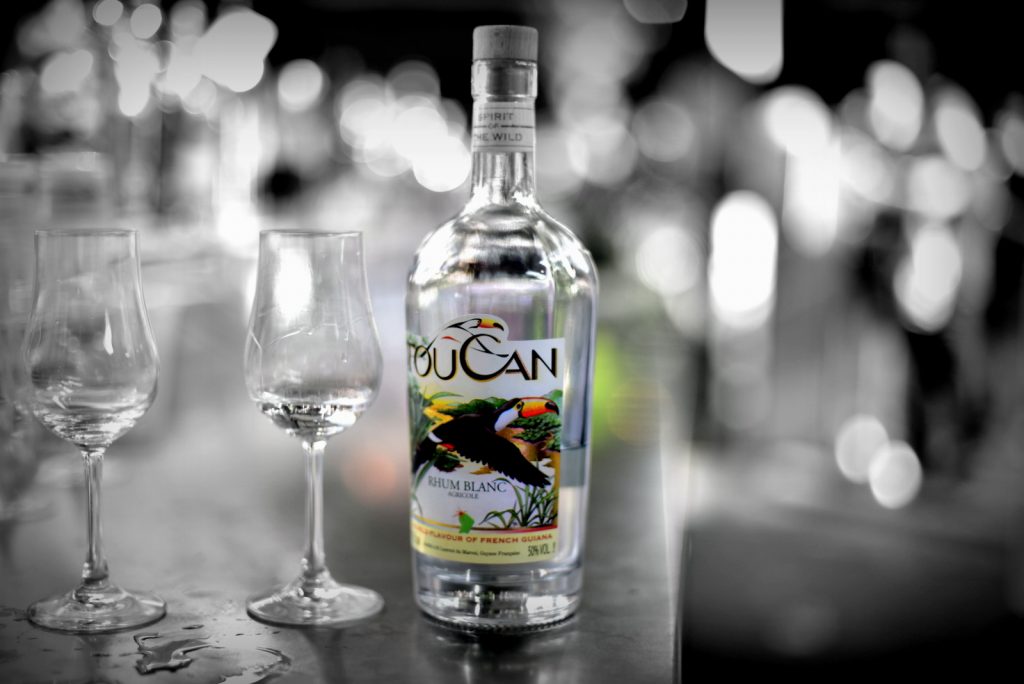
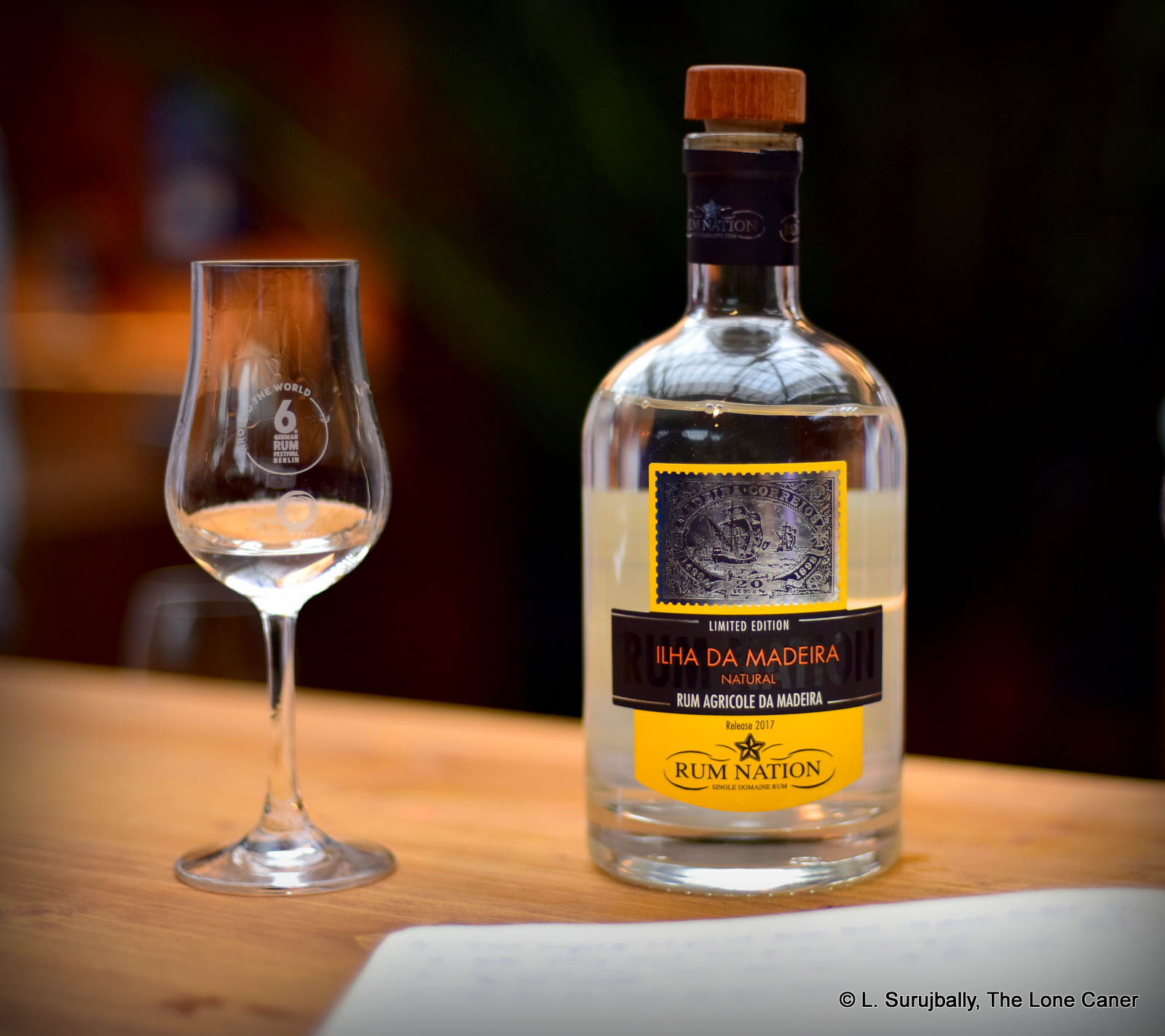
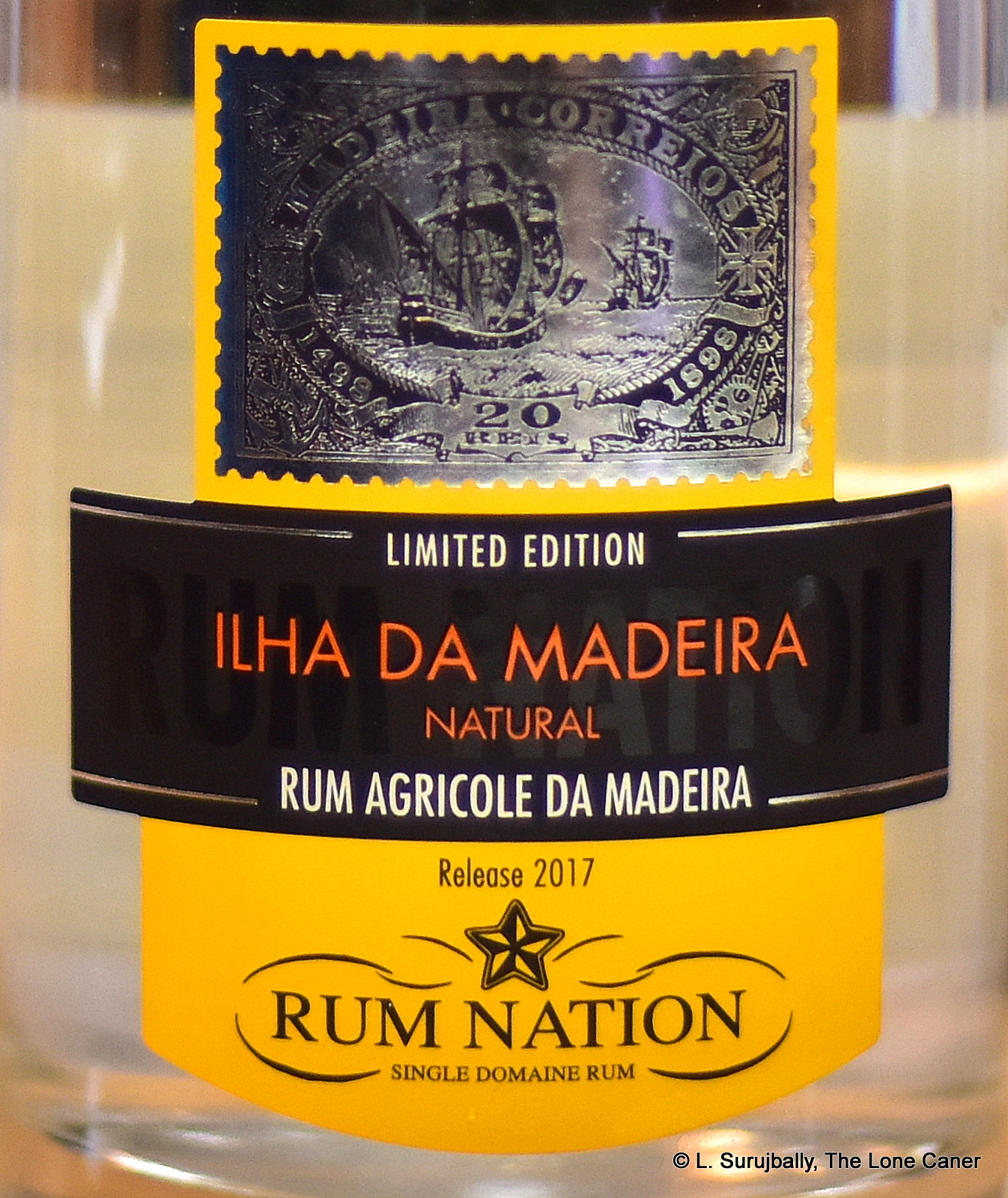 Anyway, here’s what it was like. The nose of the Ilha da Madeira fell somewhere in the middle of the line separating a bored “meh” from a more disbelieving “holy-crap!”. It was a light melange of a playful sprite-like aroma mixed in with more serious brine and olives, a little sweet, and delicate – flowers, sugar water, grass, pears, guavas, mint, some marzipan. You could sense something darker underneath – cigarette tar, acetones – but these never came forward, and were content to be hinted at, not driven home with a sledge. Not really a brother to that fierce Jamaican brawler, more like a cousin, a closer relative to the
Anyway, here’s what it was like. The nose of the Ilha da Madeira fell somewhere in the middle of the line separating a bored “meh” from a more disbelieving “holy-crap!”. It was a light melange of a playful sprite-like aroma mixed in with more serious brine and olives, a little sweet, and delicate – flowers, sugar water, grass, pears, guavas, mint, some marzipan. You could sense something darker underneath – cigarette tar, acetones – but these never came forward, and were content to be hinted at, not driven home with a sledge. Not really a brother to that fierce Jamaican brawler, more like a cousin, a closer relative to the